Aperture's Blog, page 66
October 14, 2020
The Photographer Using Space Travel to Theorize about Climate Change
COVID Economy. To speak of utopia at this moment is heartrending. COVID-19 has infected more than 38 million people and upended countless lives; it has also brutally exacerbated racial, gender, and economic inequalities in the U.S. and worldwide. At this time, I don’t know who is going to care for and educate my children for the foreseeable future during the hours I need to work, and my partner’s pandemic relief unemployment benefits have ended. Many find themselves jobless without options; the economic depression the U.S. is undergoing offers precious little safety net. Consequently, many are in even worse circumstances: hungry, or facing precarious health and housing situations with scant protection in the privatized, competitive neoliberal state. The rich sequester themselves in country homes while the masses are left vulnerable; individual wealth trumps universal human welfare.
Race. And yet. In mid-2020 the largest social protests in U.S. history were mobilized in the Black Lives Matter movement, making demands for racial and economic justice and the cessation of violence by police and white people against minorities.
Air. The ambivalence over whether we can safely hold large outdoor demonstrations after months of strict social distancing comes from a (still) partial understanding of the peculiar nature of the coronavirus; it doesn’t seem to present as great a threat of contagion in fresh air, particularly with the use of individual face masks. The epidemiology of COVID-19 is still maddeningly uncertain, and that the images of hazmat suit–clad health care workers in March and April morphed into pictures of rallies of bandana- and home-made mask–wearing crowds in May and June presented a whiplash turn of events.
Breath. George Floyd’s last words as he was killed by police in Minneapolis, like Eric Garner’s when he was killed by the NYPD in Staten Island, were “I can’t breathe.” And now we mask. Or not. Breathing has become politicized, with Trumpists having believed they were invincible to a “Chinese” virus that initially hit urban areas hardest and was therefore dismissed, while Black people continue to be deprived of their lives by white officers or white vigilantes.
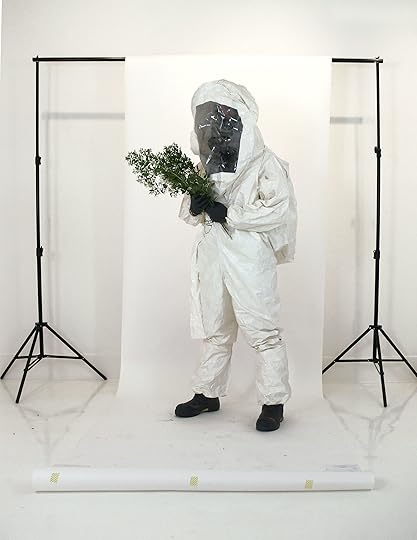 Dawn DeDeaux, Grasping Nature, 2013
Dawn DeDeaux, Grasping Nature, 2013Courtesy the artist
Outer Space. And yet. White tech billionaires continue their race to spacestead, to colonize the moon, or Mars, creating artificial ecologies that will compel the continuous techno-engineering of synthetic air. Capsule life requires some serious PPE in the inhospitable environment of outer space. Why do the privileged not protect the air on Earth, for those who currently inhabit the planet? “NewSpace” endeavors funded by Amazon’s Jeff Bezos and Paypal co-founder Elon Musk race to flee the planet. The so-called exit strategy of these private NewSpace exploration and colonization schemes will be limited to those who can afford a wholly simulated atmosphere shielding them from the asperity of space.
Space Clowns. From 2012 to 2016 the Louisiana-based artist Dawn DeDeaux created a series of images of astronaut-like creatures on metal panels, drawn in large part from photography sessions she conducted with first responders dressed in moderate to extreme protective equipment. DeDeaux later staged exhibitions of these digital photocollages, titled Space Clowns, in venues in New Orleans and Alabama as part of her larger MotherShip project, a work concerned with the kinship of climate change relocations and the disorientation of space travel.
Many of DeDeaux’s Space Clowns depict full-length silhouettes of figures in a kind of hybridized protective gear based on hazmat suits and diving equipment. (The original portraits were shot at the Robert Rauschenberg Foundation in Captiva, Florida, and the Tulane University School of Public Health and Tropical Medicine in New Orleans, where DeDeaux had art residencies.) The surfaces of the works are decorated with lace, floral, or wrought-iron patterns. According to DeDeaux, these biomorphic ornamental motifs will remind future space travelers of Earth’s lost bounty: as she writes, the explorers are adorned with “colorful curvilinear patterns belonging to our place of origin, a place called Earth. . . . It is imagined that even the most manly men now wear their flower suits like a badge of honor, a symbol of identity.” The appearances of DeDeaux’s space travelers are as important as their destinations, and, like the elaborate getups of the Sun Ra Arkestra and Parliament-Funkadelic, their costumes are a pastiche of historical references; while DeDeaux combines diving bells and radiation equipment, the Arkestra drew on the geometries of the ancient Egyptian visual canon, and Parliament-Funkadelic riffed on 1970s urban street fashion styled in futuristic metallic fabrics.
 Dawn DeDeaux, Red Velvet Space Clown, 2016–17
Dawn DeDeaux, Red Velvet Space Clown, 2016–17Courtesy the artist
New Orleans. DeDeaux has discussed MotherShip as a reaction to the destruction wrought by climate change and the future potential wasteland of a human-altered ecology. Though these may seem apocalyptic musings, between the devastation of Hurricane Katrina in 2005 and the catastrophe of the BP Deepwater Horizon oil spill in 2010, DeDeaux’s native Louisiana has been hammered by ecological disasters that have made parts of the Mississippi River Delta Basin uninhabitable and threaten to destroy wildlife habitats throughout the Gulf Coast. The Ebola outbreak in nearby Dallas in 2014 brought a fresh fear to the region; at the time of a residency DeDeaux conducted there, Tulane’s School of Public Health and Tropical Medicine was among the leading combatants against the spread of the Ebola virus.
MotherShip. DeDeaux cites the architect-engineer R. Buckminster Fuller’s warnings about population expansion and reduced resources as inspiration for the project, stating, “I was in touch with Fuller in 1981 or ’82 just prior to his death to solicit an essay from him for a book I was aiming to publish titled ‘Out There: Man’s Invasion of Space.’” DeDeaux also makes no secret of the influence of Afrofuturism on the MotherShip project—it takes its name from the P-Funk Mothership, a “funk deliverance” spacecraft used as a stage prop in Parliament-Funkadelic’s large arena shows in the 1970s. The P-Funk Mothership acted in part as a heuristic object, delivering the lessons of funk bestowed by the mother, mother Africa. The mothership metaphor in the band’s mythology is powerfully joined to that of the parliament, a legislative body of government, as forming a collective’s identity. The word parliament is derived from the French parler, “to speak.” Invoking a deliberative body of governance, a parliament in this sense takes care of the Earth in anticipation of the return of the mothership. Parliament is a collection of voices, but, in every way, it cares for the Earth understood as a singular object: we have but one Earth.
As the theorist Kodwo Eshun has explained, P-Funk’s Mothership Connection is “the link between Africa as a lost continent in the past and between Africa as an alien future.” While Ra’s call to rapture Black people to Saturn with his interplanetary Arkestra, using the metaphor of the ark fleeing Earth, contested the history of slavery and its slave ship vehicles, the metaphor of the mothership, in contrast, invokes the concept of the brood, in which the big ship transports travelers to safety upon her return. It also inverts the concept of Mother Earth to instead envision technology as feminine and maternal, comforting children upon her arrival, and nourishing them with a funky party, initially the lavish P-Funk Earth Tours of 1976 and 1977.
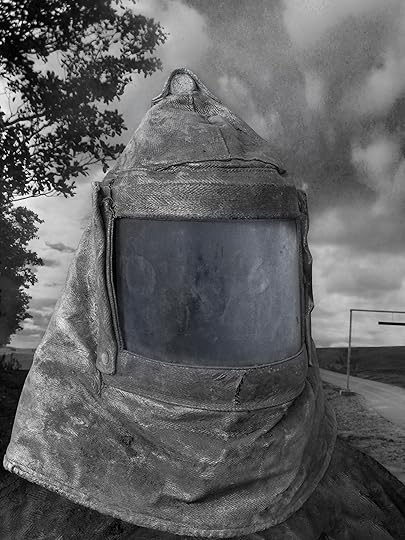 Dawn DeDeaux, Guardian at the Levee Gate, 2012–13
Dawn DeDeaux, Guardian at the Levee Gate, 2012–13Courtesy the artist
Mothership Earth. Metaphors are powerful, and Fuller’s use of the now famous “Spaceship Earth” formulation puts forward a vision of Earth as a technological ecology created by humans. The concept of Spaceship Earth seeks to supplant the biological codependency of humanity and nature with a vision of a human-authored, technologically administered planet that can find surrogates in or be replaced by other spaceships—Spaceship Mars or Spaceship Europa, moon of Jupiter, perhaps. To redirect us from the plurality and profligacy of the metaphor of the spaceship, I propose a new metaphor—that of Mothership Earth, combining the two singularities of the Mother and the Earth. For in P-Funk lore the mothership is a singular object; one can have but one biological mother, and there is pointedly not one mothership among many. We cannot build our mothers as we would a spaceship; rather, they make us.
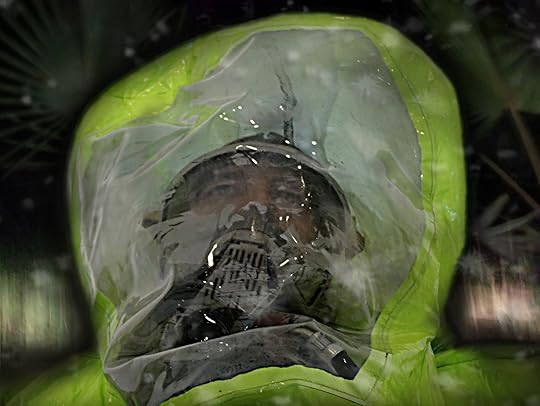 Dawn DeDeaux, FALLOUT: Green First Responder in Headlights with Palms, 2013
Dawn DeDeaux, FALLOUT: Green First Responder in Headlights with Palms, 2013Courtesy the artist
Guardians. And yet. The fascination with outer space colonization, in the time of human-driven climate change, political upheaval, and a widespread health crisis, recently brought DeDeaux back to the photographic origins of Space Clowns. What initially seemed like mere source images for the baroque Space Clowns collages now appear as harbingers of a new kind of breath regulation. These first responder portraits, which DeDeaux initially shot using Rauschenberg’s own 8-by-10 camera in Captiva, she terms Guardians. The images present an eerie foreshadowing of the protections necessary to survive in the ongoing age of deadly airborne viruses. From mustard gas to nuclear radiation, from oil spills to gas leaks, from influenza (fowl or swine origin) to coronavirus (bat origin), humans have created countless situations in which air has been made toxic and unbreathable due to alterations to ecologies and encroachments on and the destruction of wildlife habitats. In Fallout (2013), one of DeDeaux’s photographs from Guardians, a man in a neon-green cloaked hazmat suit with a clear visor gazes above the viewer’s line of sight. Photographed at an extreme horizontal angle from a perspective beneath his chin, he appears reclined, and his fixed stare lends him a preternatural stillness that is almost corpse-like. Wearing a ventilator beneath his face shield, he assumes an uncanny, cyborgian quality. As he looks upward, the blur of palms and other plants around him gives the impression that he is moving in space, plunging backward in a vertiginous fall. The isolation of his stuffy, fogged-up suit keeps him from the surrounding jungle of vegetation, a habitat on Earth that humans once traversed naturally, effortlessly, without fear of whatever hazardous condition from which he is insulated. In the Guardians series, DeDeaux is reassessing the ways in which our current moment has returned to consciousness the insecurity of ever being fully protected against often invisible threats like warming oceans and disease, or of being prepared for the unpredictable effects of the depletion of life-sustaining resources on Mothership Earth. As she states, “During the [coronavirus] quarantine I have come to value equally my straightforward photography of responders. The decorative aspects of the [Space Clowns] work went extreme future tense, imagining us already exiled from the planet, when the curvilinear lines of flora and fauna superseded the straight lines of flags in terms of conveying our place of origin, Earth, as we drifted further and further away, looking for its closest replica. It is the natural world of earth and rain, the fresh water, that shaped the aesthetic of our planet and perhaps our future wardrobe signifiers. . . . [Yet] the original portrait photos offer a greater punch of evidence for our NOW. This time of alienation is REAL, and the unadorned photo seems more poignant.”
October 9, 2020
Announcing the 2020 PhotoBook Awards Shortlist
The Paris Photo–Aperture Foundation PhotoBook Awards welcome a new partner in DELPIRE & CO, who has joined forces with Paris Photo and Aperture to ensure the continuity of the awards in this most unusual of years. While the international photography community will not be able to gather in celebration at the Grand Palais this year, Paris Photo and Aperture are delighted to confirm that the prize continues. The exhibition of the shortlisted books will be hosted in Paris by DELPIRE & CO from November 5–28. The final jury will take place as planned, and the winner will be announced on Friday, November 13—including the announcement of the recipient of the $10,000 cash prize in the First PhotoBook category. The shortlisted books for 2020 will also be featured in Issue 018 of The PhotoBook Review, co-published with DELPIRE & CO. Additional selections from this special issue of The PhotoBook Review, guest edited by Dr. Deborah Willis, will be presented alongside the exhibition of shortlisted books in Paris.
The 2020 shortlist jury took place over the course of three days at Mana Contemporary in New Jersey, and involved the review of more than seven hundred submissions. Our thanks to the shortlist jurors, including Joshua Chuang (New York Public Library), Lesley A. Martin (Aperture Foundation), Sarah Hermanson Meister (MoMA), Susan Meiselas (photographer, Magnum Foundation), and Oluremi C. Onabanjo (independent curator and historian).
“Despite the fact that the usual rhythms of book perusal and discovery have been disrupted, it’s clear that the photobook community has continued to find ways to connect, and more importantly, to keep creating,” states the jury chair, Lesley Martin. Juror Oluremi Onabanjo asserts, “In 2020, the book and catalogue in contemporary photographic practice continues to evolve and unfurl in many different directions, while offering more audiences the opportunity to get involved and fall in love with books.”
The Paris Photo–Aperture Foundation PhotoBook Awards were founded in 2012 to celebrate the photobook’s contributions to the evolving narrative of photography and comprise three major categories: First PhotoBook, PhotoBook of the Year, and Photography Catalogue of the Year. Below are the 35 books selected for the 2020 PhotoBook Awards Shortlist.
First PhotoBook

Stephen Berkman, Predicting the Past—Zohar Studios: The Lost Years, Hat & Beard Press, Los Angeles

Judith Black, Pleasant Street, STANLEY/BARKER, Shrewsbury, United Kingdom

Soumya Sankar Bose, Where the Birds Never Sing, Red Turtle Photobook (self-published), Kolkata, India
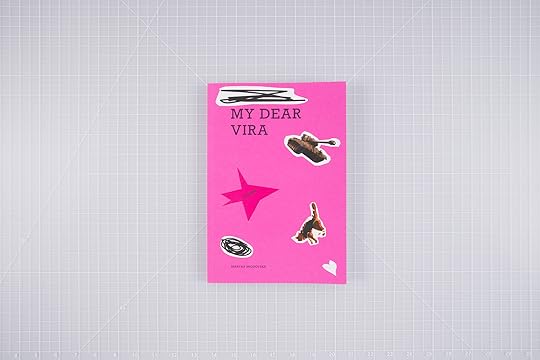
Maryna Brodovska, My Dear Vira, Self-published, Kyiv, Ukraine

June Canedo de Souza, Mara Kuya, Small Editions (self-published), Brooklyn
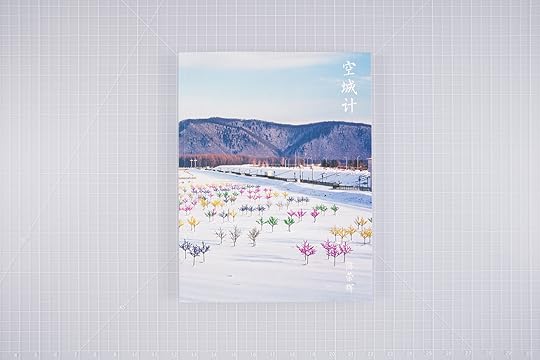
Ronghui Chen, Freezing Land, Jiazazhi Press, Ningbo, China

Ryan Debolski, LIKE, Gnomic Book, Brooklyn
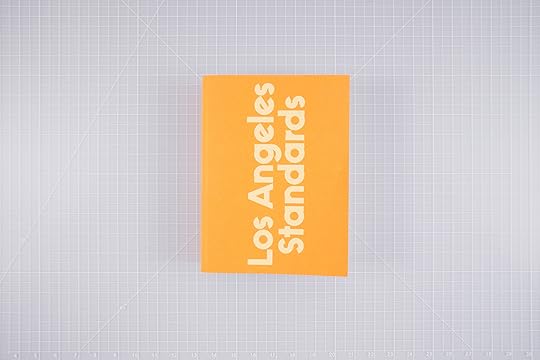
Caroline & Cyril Desroche, Los Angeles Standards, Poursuite, Paris

Buck Ellison, Living Trust, Loose Joints Publishing, Marseille, France

Charlie Engman, MOM, Edition Patrick Frey, Zürich
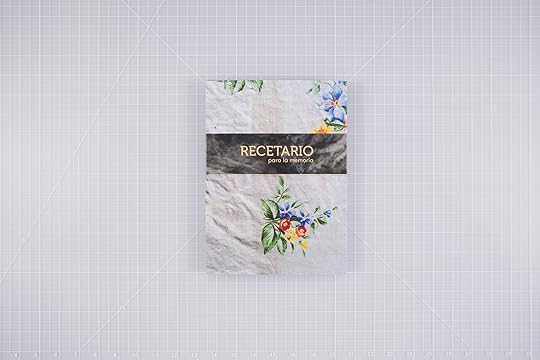
Zahara Gómez Lucini, Recetario para la memoria, Self-published, Mexico City
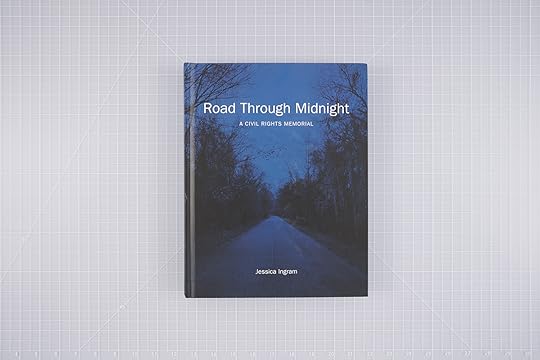
Jessica Ingram, Road through Midnight: A Civil Rights Memorial, University of North Carolina Press, Chapel Hill
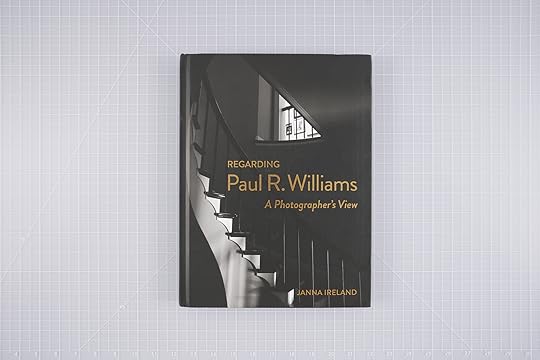
Janna Ireland, Regarding Paul R. Williams: A Photographer’s View, Angel City Press, Santa Monica, California

Francesca Leonardi, ’O Post Mio, Postcart Edizioni, Rome

Yael Martínez, La casa que sangra, KWY Ediciones, Lima, Peru

Sara Perovic, My Father’s Legs, J&L Books, New York

Fabio Ponzio, East of Nowhere, Thames & Hudson, London

Agnieszka Sejud, HOAX, Self-published, Wrocław, Poland
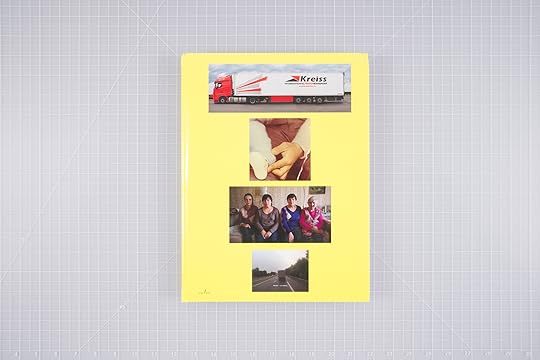
Diana Tamane, Flower Smuggler, Art Paper Editions, Ghent, Belgium

Efrem Zelony-Mindell, n e w f l e s h , Gnomic Book, Brooklyn
Previous
Next
Stephen Berkman
Predicting the Past—Zohar Studios: The Lost Years
Hat & Beard Press, Los Angeles
Judith Black
Pleasant Street
STANLEY/BARKER, Shrewsbury, United Kingdom
Soumya Sankar Bose
Where the Birds Never Sing
Red Turtle Photobook (self-published), Kolkata, India
Maryna Brodovska
My Dear Vira
Self-published, Kyiv, Ukraine
June Canedo de Souza
Mara Kuya
Small Editions (self-published), Brooklyn
Ronghui Chen
Freezing Land
Jiazazhi Press, Ningbo, China
Ryan Debolski
LIKE
Gnomic Book, Brooklyn
Caroline & Cyril Desroche
Los Angeles Standards
Poursuite, Paris
Buck Ellison
Living Trust
Loose Joints Publishing, Marseille, France
Charlie Engman
MOM
Edition Patrick Frey, Zürich
Zahara Gómez Lucini
Recetario para la memoria
Self-published, Mexico City
Jessica Ingram
Road through Midnight: A Civil Rights Memorial
University of North Carolina Press, Chapel Hill
Janna Ireland
Regarding Paul R. Williams: A Photographer’s View
Angel City Press, Santa Monica, California
Francesca Leonardi
’O Post Mio
Postcart Edizioni, Rome
Yael Martínez
La casa que sangra
KWY Ediciones, Lima, Peru
Sara Perovic
My Father’s Legs
J&L Books, New York
Fabio Ponzio
East of Nowhere
Thames & Hudson, London
Agnieszka Sejud
HOAX
Self-published, Wrocław, Poland
Diana Tamane
Flower Smuggler
Art Paper Editions, Ghent, Belgium
Efrem Zelony-Mindell
n e w f l e s h
Gnomic Book, Brooklyn
Photography Catalogue of the Year

Anne Turyn: Top Stories, Elena Cheprakova and Kirsten Weiss, eds., Weiss Berlin, Berlin
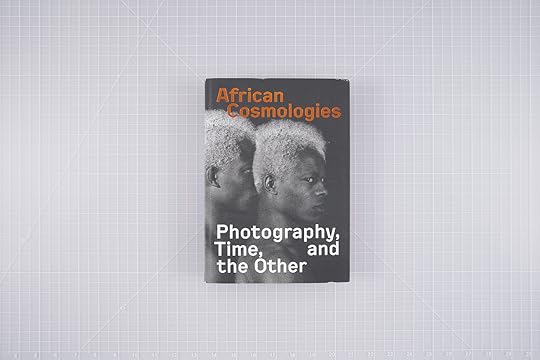
African Cosmologies: Photography, Time, and the Other, Steven Evans, Max Fields, and Mark Sealy, eds., Schilt Publishing, Amsterdam, and FotoFest, Houston

Bill Brandt | Henry Moore, Martina Droth and Paul Messier, eds., Yale Center for British Art, New Haven, Connecticut

Hommage à Moï Ver, The Ghetto Lane in Wilna (Schaubücher 27): 65 Pictures by M. Vorobeichic, Mindaugas Kvietkauskas, ed., Institute of Lithuanian Literature and Folklore, Vilnius

Imagining Everyday Life: Engagements with Vernacular Photography, Tina M. Campt, Marianne Hirsch, Gil Hochberg, and Brian Wallis, eds., Walther Collection, New York, and Steidl, Göttingen, Germany
Previous
Next
Anne Turyn: Top Stories
Elena Cheprakova and Kirsten Weiss, eds.
Weiss Berlin, Berlin
African Cosmologies: Photography, Time, and the Other
Steven Evans, Max Fields, and Mark Sealy, eds.
Schilt Publishing, Amsterdam, and FotoFest, Houston
Bill Brandt | Henry Moore
Martina Droth and Paul Messier, eds.
Yale Center for British Art, New Haven, Connecticut
Hommage à Moï Ver, The Ghetto Lane in Wilna (Schaubücher 27): 65 Pictures by M. Vorobeichic
Mindaugas Kvietkauskas, ed.
Institute of Lithuanian Literature and Folklore, Vilnius
Imagining Everyday Life: Engagements with Vernacular Photography
Tina M. Campt, Marianne Hirsch, Gil Hochberg, and Brian Wallis, eds.
Walther Collection, New York, and Steidl, Göttingen, Germany
PhotoBook of the Year
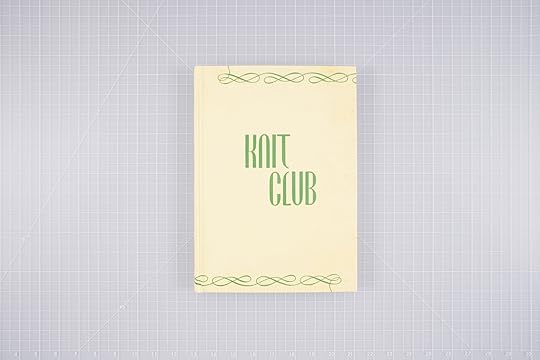
Carolyn Drake, Knit Club, TBW Books, Oakland, California

Samuel Fosso, Autoportrait, Walther Collection, New York, and Steidl, Göttingen, Germany
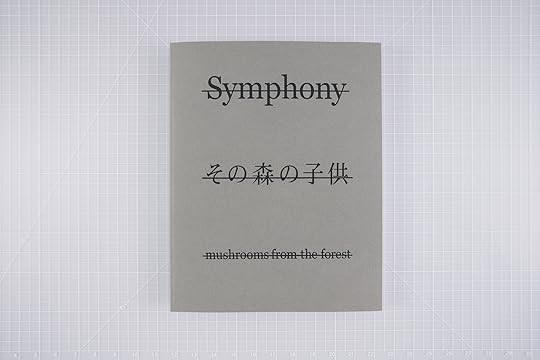
Takashi Homma, Symphony—Mushrooms from the Forest, Case Publishing, Tokyo

Thomas Kuijpers, Hoarder Order, Fw:Books, Amsterdam

Adam Lach and Dyba Lach, How to Rejuvenate an Eagle, Self-published, Warsaw

Edgar Martins, What Photography & Incarceration Have in Common with an Empty Vase, The Moth House, Bedford, United Kingdom
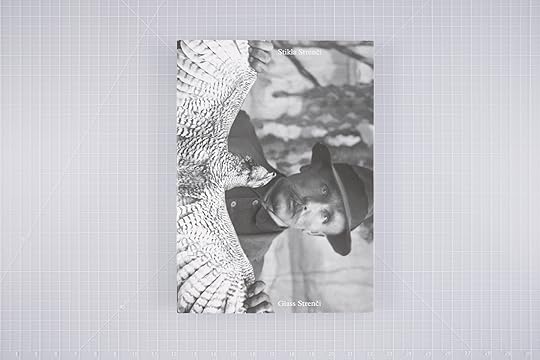
Orbita, Glass Strenči, Orbita and The Latvian Museum of Photography, Riga, Latvia

Gloria Oyarzabal, Woman Go No’Gree, Editorial RM, Barcelona, and Images Vevey, Switzerland
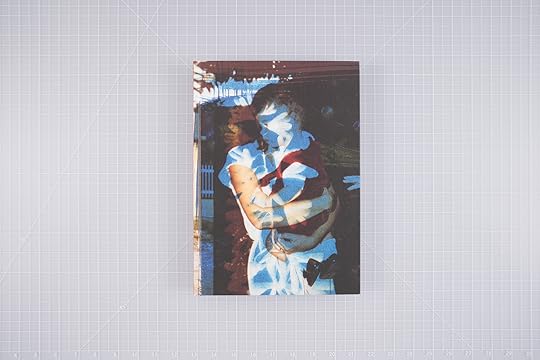
Luis Carlos Tovar, Jardín de mi Padre, Editorial RM, Barcelona, and Musée de l’Elysée, Lausanne, Switzerland
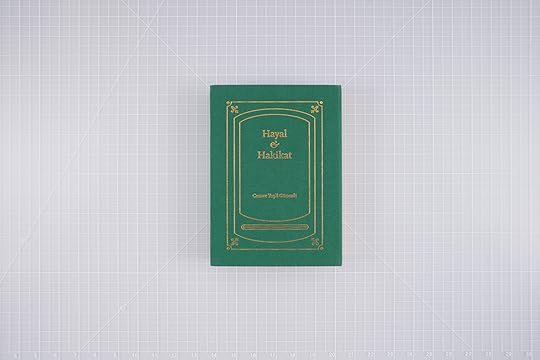
Cemre Yeşil Gönenli, Hayal & Hakikat: A Handbook of Forgiveness & A Handbook of Punishment, GOST Books, London, and FiLBooks, Istanbul
Previous
Next
Carolyn Drake
Knit Club
TBW Books, Oakland, California
Samuel Fosso
Autoportrait
Walther Collection, New York, and Steidl, Göttingen, Germany
Takashi Homma
Symphony—Mushrooms from the Forest
Case Publishing, Tokyo
Thomas Kuijpers
Hoarder Order
Fw:Books, Amsterdam
Adam Lach and Dyba Lach
How to Rejuvenate an Eagle
Self-published, Warsaw
Edgar Martins
What Photography & Incarceration Have in Common with an Empty Vase
The Moth House, Bedford, United Kingdom
Orbita
Glass Strenči
Orbita and The Latvian Museum of Photography, Riga, Latvia
Gloria Oyarzabal
Woman Go No’Gree
Editorial RM, Barcelona, and Images Vevey, Switzerland
Luis Carlos Tovar
Jardín de mi Padre
Editorial RM, Barcelona, and Musée de l’Elysée, Lausanne, Switzerland
Cemre Yeşil Gönenli
Hayal & Hakikat: A Handbook of Forgiveness & A Handbook of Punishment
GOST Books, London, and FiLBooks, Istanbul
All photographs by Daniel Salemi.
Note: Given the jurors’ extensive engagement in the scholarship and production of photography books, the Paris Photo–Aperture Foundation PhotoBoook Awards maintain a strict policy of recusal, in which the juror in question must remove themselves from the discussion of books in which they were directly involved; those books must be unanimously voted in by the remaining jurors.
October 8, 2020
Can Photographs Provide Information When Truth Is Disrupted?
The 2020 Aperture Summer Open, Information, presents new work by fourteen photographers and lens-based artists who examine globalization, technology, and politics, and the dynamic changes to personal and social identity charted by mass media today. They consider declassified military archives and CIA conspiracy theories, stage encounters with race and memory, present evidence of incarceration and violence, and visualize the physical spaces where digital information is concealed from the public eye. While some artists interrogate the construction of images themselves, others rely on the photograph’s power to cross between dream and dystopia, fact and fable. Together, they broadcast new ways of viewing our present—and our future.
 Javier Alvarez, Marco Antonio in His Room , 2016, from the series PRÉDIO
Javier Alvarez, Marco Antonio in His Room , 2016, from the series PRÉDIOJavier Alvarez is a documentary photographer who examines inequality and social justice. His project PRÉDIO (Portuguese for “building”) explores the Marconi building, a repurposed office tower in São Paulo. In the 1990s, workers and social activists broke into the building and began squatting there. In 2013, Alvarez started visiting the Marconi building regularly, living there off and on a few times per year for up to eight weeks at a time, and began compiling a series of photographs, video footage, interviews, archival material, and collages from a personal travel journal, all of which deal with themes of home and family (or lack thereof), social responsibility, and the power of visibility. Alvarez deftly adapts his work to match the improvised style of those living in the Marconi building: he layers short, emotional accounts on top of and around images; collages hand-colored pages; and tapes portraits into his small notebook. Toggling between images of entire buildings and close-cropped portraits, Alvarez portrays the Marconi building as a metaphor for the issues facing urban life and survival in contemporary Brazil. —Luke Bolster
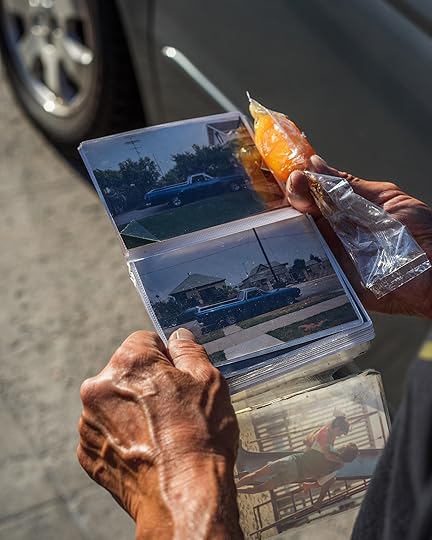 Gus Aronson, Family Album, 2019, from the series Eurydice
Gus Aronson, Family Album, 2019, from the series EurydiceThe photographs in Gus Aronson’s series Eurydice are individual stories of engagement with obsessions and motifs found in his wanderings, yet together, they provide point and counterpoint, fact and fiction. Central to the series is an attempt to visualize the myth of Orpheus, who travels to the underworld to retrieve his wife, Eurydice, only to lose her again when, breaking the set conditions for Eurydice’s return, he turns back to see if she’s still following behind him on their way out. While the story is often interpreted as one of love and despair, Aronson prefers to center the act of looking. Photography does not have to be a record of the past but can remain in a constant present or envision a potential future. In Eurydice, pictures of hands flipping through a photo album, or of an artist painting a facsimile, break down the temporal walls that confine old theories of photographic fact. “Don’t look back,” these pictures seem to say. “Keep moving, and see what you will find.” —Eli Cohen
 Widline Cadet, Kò an Kòm yon Lokal ki Baze sou Je (The Body as a Site Based on Sight), 2019, from the series Seremoni Disparisyon (Ritual [Dis]appearances)
Widline Cadet, Kò an Kòm yon Lokal ki Baze sou Je (The Body as a Site Based on Sight), 2019, from the series Seremoni Disparisyon (Ritual [Dis]appearances)As a Haitian-born artist now based in New York, Widline Cadet’s identity is deeply rooted in duality. At the center of this duality is the self, the subject Cadet investigates most thoroughly in her project Seremoni Disparisyon (Ritual [Dis]appearances). Across her images, she considers how race, memory, migration, and specifically Haitian cultural identity function in the United States. With other women often serving as her doubles in “self-portraits”—flashes or scarves obscuring their faces—Cadet thinks of photography as “a means of disappearing into visibility,” a sentiment that arises from the fact that for immigrants, especially those who are undocumented, recognition or surveillance can be dangerous. For Cadet, a photograph can provide a form of camouflage, actively disrupting a viewer’s expectations and offering to her subjects—and herself—a sense of poetic visual presence. —Luke Bolster
 Emma Cantor, Document Storage Facility, 2018, from the series The Production of Certainty
Emma Cantor, Document Storage Facility, 2018, from the series The Production of CertaintyEmma Cantor’s series The Production of Certainty investigates the material presence of information in the digital age—the flow and protection of information through data servers and fiber-optic cables, and the destruction of information in high-security facilities. “The physical presence of information is both hidden and also, with each passing year, shrinking,” she says. Storage units, the transfer of confidential documents, and a private investigator’s inventory each represent tangible forms of information otherwise invisible and transferred online, yet a blasted hard drive or an Infoshred worker vacuuming shreds of paper dramatize destruction. The facilities where Cantor photographed, what she calls “physical spaces concerned with the material reality of digital information,” are a backdrop to illustrating the spectacular erasure of information in a time when most records of our personal and professional lives would seem, paradoxically, to have a permanent digital footprint. —Zora Gandhi
 Yu-Chen Chiu, America Seen: 4. Paradise Valley, Arizona, 2017, from the series America Seen
Yu-Chen Chiu, America Seen: 4. Paradise Valley, Arizona, 2017, from the series America SeenYu-Chen Chiu’s work focuses on notions of migration and belonging in the United States, her “second home,” as she puts it. In her project America Seen, Chiu brings an outsider’s perspective to the country’s tumultuous social and political moment. The project, she says, is “a visual poem about the social landscape of the United States during the Trump administration.” Rather than exacerbate the deeply personal and often volatile themes of race and patriotism, Chiu crafts subdued and contemplative images. Through the use of black and white, and somber subjects framed by buildings or train windows, Chiu creates images that border on memories or dreams, vaguely familiar, but just out of reach of comfortable nostalgia. Her work attempts to access the varied nature of America, “from the happy dreamers to the lonely wanderers.”—Luke Bolster
 Ash Garwood, Folded and Faulted, 2020, from the series Common Fault
Ash Garwood, Folded and Faulted, 2020, from the series Common FaultTheory and practice intersect in Ash Garwood’s Common Fault, a series of grandiose gelatin-silver prints, where an uncanny valley of landscape photography meets digitally constructed images. The process begins in Cinema 4D, a modeling software in which Garwood pieces together photographs with generated textures to render a negative that is then developed and printed in the darkroom. Garwood does not hide the construction, deciding instead to showcase the process as a focal point in understanding the work; when the final image hangs on the wall, it performs as both photograph and digital art. Garwood’s landscapes bring together seemingly disparate ideas about queer theory, environmental studies, and quantum physics into depictions both familiar and unrecognizable: a mountain range could look like an ocean, a rocky field like the surface of the moon. In presenting digitally created works that “pass” as landscape photographs—in a confluence of the word’s meanings—Garwood reclaims the power implicit in producing landscape imagery, a field often dominated by white, male, heteronormative, settler-colonial ideas of power. Rather than evading ideals of authority and reality, her prints invite the viewer to the feeling of uncertainty. —Eli Cohen
 Evan Hume, Project Oxcart (A-12), 2019, from the series Viewing Distance
Evan Hume, Project Oxcart (A-12), 2019, from the series Viewing DistanceGrowing up in the Virginia suburbs of Washington, DC, Evan Hume spent much of his life in close proximity to the operational center of the US government. In his work, Hume transmits a version of this early familiarity to a wider audience. Through years of research and requests through the Freedom of Information Act, Hume has amassed a collection of informational photographs from agencies such as the CIA, FBI, and NSA. Viewing Distance deals with the form of photography as much as with its content. Leaning into both deliberate redactions and unintentional distortions that occur after years of archival storage and repeated photocopying, Hume’s work evaluates the supposed authenticity of an image as well as its subject matter. Presenting what he calls “historical fragments in a state of flux,” Hume shows how incomplete, indeterminate, and fluid images can be, despite capturing a fixed moment in time. The line between past and present is often blurred—modern iPhones sitting on top of stacks of old, Polaroid-type photographs; or futuristic jets flying across black-and-white, grainy landscapes. These distortions probe the source of the image, and the time between its capture and the present. —Luke Bolster
 Seunggu Kim, Globe Amaranth Festival, 2018, from the series Better Days
Seunggu Kim, Globe Amaranth Festival, 2018, from the series Better DaysBalancing natural and unnatural elements in the frame, Seunggu Kim highlights the societal ironies embedded in contemporary Korean life. In the large-scale images of his project Better Days, Kim shows people enjoying leisure activities in crowded scenes, the cityscape of Seoul looming in the background—people work so many hours and have so few vacation days that they’re unable to travel very far. “People are sincere, optimistic, and dynamic,” Kim says. Crowds enjoy their limited time off amongst one another, camp alongside each other, assist each other in taking group photos, maintain a watchful eye over children in a swimming pool. This enduring sense of community—possibly a fantasy, definitely a dream in the era of pandemic—reminds us: is there anything more important than living happily together? —Allie Monck
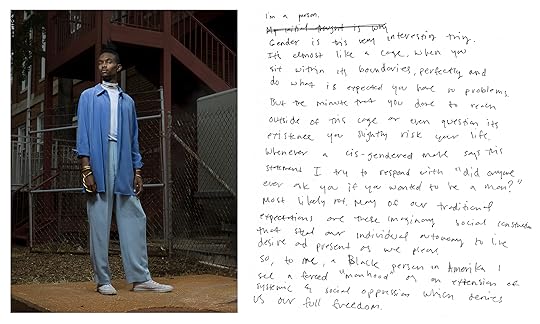 Joshua Rashaad McFadden, Avery Jackson, Morehouse College, 2017, from the series Evidence
Joshua Rashaad McFadden, Avery Jackson, Morehouse College, 2017, from the series EvidenceWho controls the conversation around Black men in the media? This question animates the artist and photojournalist Joshua Rashaad McFadden’s project Evidence, which revolves around the seven years he lived in Atlanta. His time there exposed him to the numerous and disproportionate ways violence is enacted on Black people in the US. Transcending statistics to focus on individual lives and experiences, McFadden confronts the conventional, too-often negative representations of Black men in America by including, alongside his portraits, written testimony, historical newspapers, and conversations with and texts by playwrights, actors, and historians. Evidence is a project of disruption, what McFadden calls “an archive to reframe societal views of Black masculinity and gender identity.” As an homage to Frederick Douglass’s The North Star antislavery newspaper, McFadden’s own broadsheet, Evidence, acts as both a way of transmitting information and as a pure artistic pursuit that extends beyond the museum walls. McFadden’s work is ultimately optimistic, but nuanced, as he pushes for photographs and words to recognize Black men’s lives as a “collective story you can’t ignore.” —Luke Bolster
 Daniel Mebarek, Untitled, 2020, from the series La Lucha Continua (The Struggle Continues)
Daniel Mebarek, Untitled, 2020, from the series La Lucha Continua (The Struggle Continues)In October 2019, protests erupted across Bolivia after a national election resulted in claims of fraud committed by then president Evo Morales, who returned with a counterclaim calling the protests a coup. Over the next month, Morales would resign, the conservative senator Jeanine Áñez would step in as an interim leader, and a new election date would be set for 2020. In the meantime, protests turned violent. Photographs of protesters and rioters circulated worldwide as people watched the unfolding events in Bolivia. Daniel Mebarek, whose family is Bolivian and Algerian, and whose uncle and grandfather were involved in Bolivian revolutionary politics—his grandfather was killed in 1971, during Hugo Banzer Suárez’s dictatorship—converges two distinct sets of photographs in his series La Lucha Continua (The Struggle Continues). One comes from archival material—pamphlets, family photographs, and identity photographs that Mebarek collected in recent years from his family members—which he has remade as cyanotypes. He pairs these with photographs he made in January in La Paz. A direct challenge to a historically linear vision of protest and progress in Latin America, La Lucha Continua seeks to define a space between archive and news, past and present, what Mebarek refers to as “the loopholes in official memory.” —Eli Cohen
 Kean O’Brien from the series Mapping a Genocide, 2015–20
Kean O’Brien from the series Mapping a Genocide, 2015–20Kean O’Brien’s interdisciplinary projects focus on masculinity, queer strategies for survival, and the construction of identity. His project Mapping a Genocide attempts to “develop a theoretical bridge between environmental and social justice” by documenting sites where transgender individuals were murdered, and noting how unexceptional many of these spaces appear. By using Google Maps to create images of intersections and neighborhoods, O’Brien co-opts a technology of surveillance in an effort to create a queer cartography of life and death. Mapping a Genocide asks viewers to imagine a world that is free of radicalized and gendered violence. Instead of prints, O’Brien presents the work as a slideshow, with images flickering in and out of presence, an evanescent quality that serves as a reminder, he says, that “trans people are verbs rather than nouns and are ever evolving and shifting. And so is the meaning of these landscape maps that we occupy and place ourselves within.” —Allie Monck
 Florence Omotoyo, Choose Love, 2019, from the series Everywhere + Nowhere
Florence Omotoyo, Choose Love, 2019, from the series Everywhere + NowhereFlorence Omotoyo’s photography explores the impact of social surroundings on narratives of identity in the UK, often highlighting communal spaces and transit systems. For her series Everywhere + Nowhere, she stages photographs of seemingly mundane acts, such as commuting, gathering with one’s friends, and moments of solitude. “As much as we may present and embody a group or collective,” she says, “on a deeper level, we are ruled by a set of histories, perspectives, and tastes that can only be explored by first looking at the solo individual.” This framing of community is threaded throughout Everywhere + Nowhere, emphasizing the multitudes that exist in everyday spaces. Whether depictions of waiting for a train, joining a group of friends, or taking selfies in the bathroom, Omotoyo’s photographs consider “alternative ways to be away from the structures and systems that have continuously perpetuated the same story.” —Allie Monck
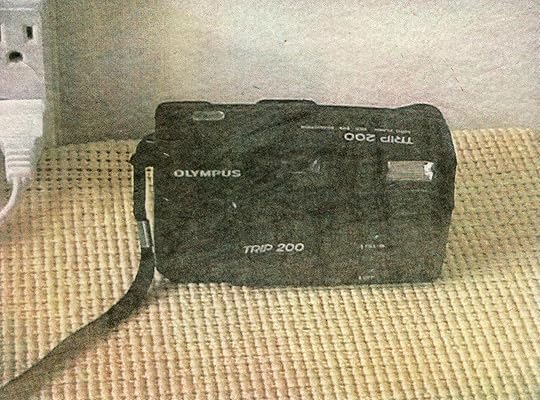 Rowan Renee, Evidence #16: Olympus Camera, 2019, from the series No Spirit For Me
Rowan Renee, Evidence #16: Olympus Camera, 2019, from the series No Spirit For MeRowan Renee is a genderqueer artist who examines the complex and restrictive relationship that law enforcement has with queer identity, addressing intergenerational trauma, gender-based violence, and the impact of the criminal justice system. Their project No Spirit For Me is a deeply personal examination of the evidence compiled by the Florida State Attorney surrounding Renee’s father’s criminal prosecution in 2008. Renee recreates the official photographs as photolithographs, adding little alteration to the cold, factual images. The transformation from digital to print mimics the transformation that these once mundane items underwent upon their father’s prosecution—VHS tapes, cameras, and computers emerge as pastel-hued ready-mades, objects of inquiry and mystery. No Spirit For Me invokes the violence inherent in the criminal justice system, pushing the limits of photography’s “burden of proof” by showing how it uses, or misuses, imagery to enforce official narratives. —Luke Bolster
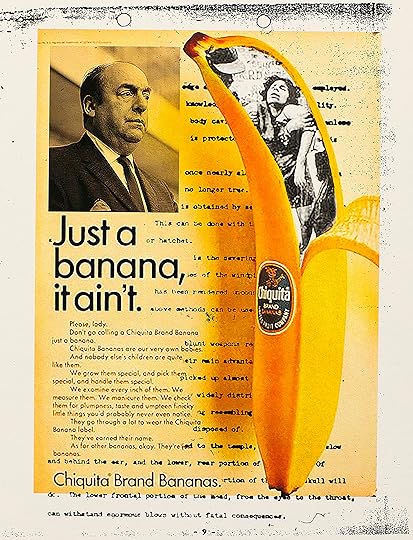 George Selley, The Simplest Local Tools. . ., 2018, from the series A Study of Assassination
George Selley, The Simplest Local Tools. . ., 2018, from the series A Study of AssassinationA Study of Assassination, declassified through the Freedom of Information Act in 1997, was a manual developed prior to the US-backed 1954 coup in Guatemala and details the CIA’s methods and standards for extrajudicial killings. The United Fruit Company, which had ties to the destabilization of multiple Latin American governments, was entangled in the violence and has settled class action lawsuits regarding its funding of paramilitary groups in Colombia as recently as 2018 under its current conglomerate, Chiquita Brands International. Alongside his photographic interpretations of A Study of Assassination, George Selley collages images of Chiquita bananas and military photographs together with pages from the manual—specifically, instructions on how to divert attention and operate covertly. He uses quotes from the manual as captions, the tense language often removing the agent from the act of killing. Selley’s reconstruction of the manual underscores the disturbing realities of American involvement in Latin America and the strategic alliance between capitalist enterprise and corrupt governance that continues to this day. —Eli Cohen
The 2020 Aperture Summer Open, Information, is curated by Brendan Embser, managing editor of Aperture magazine, with Farah Al Qasimi, artist; Amanda Hajjar, director of exhibitions at Fotografiska; Kristen Lubben, executive director of the Magnum Foundation; and Paul Moakley, editor at large for special projects at TIME. The exhibition is on view at Fotografiska New York through October 25, 2020.
Aperture’s 2020 Virtual Gala Honors Trailblazing Women in Photography
For sixty-eight years, Aperture has chronicled, reflected, and encouraged innovation in photography. Women have played a central role since Aperture began in 1952—with Dorothea Lange, Barbara Morgan, Nancy Newhall, and Dody Weston Thompson critical to the creation of Aperture magazine—and throughout its history as a prominent thought-leader in our field. On October 20, Aperture’s first free virtual gala honors Dr. Naomi Rosenblum and Ming Smith, two legends who have played important and undersung roles in the evolution of photography.
The gala, streamed on YouTube Live, will feature entertainment and surprises by April Hunt, Kasseem “Swizz Beatz” Dean, and Cecily, alongside tributes and special guest appearances by Derrick Adams, Chris Boot, Sherry Bronfman, Darius Himes, Cathy Kaplan, Antwaun Sargent, and Deborah Willis.
Coinciding with the gala, Aperture is partnering with Christie’s for an online auction, with live bidding October 19–28 of over sixty pieces by artists such as Sharon Core, LaToya Ruby Frazier, Lyle Ashton Harris, Robert Mapplethorpe, David Benjamin Sherry, Stephen Tayo and more.
Read below to learn about this year’s Aperture Gala honorees, Dr. Naomi Rosenblum and Ming Smith, and register online for free to watch the October 20, 2020 Aperture Virtual Gala: Agents of Change on YouTube.
 Left to right: Naomi Rosenblum by Paul Strand; Naomi Rosenblum at ICP Infinity Lifetime Achievement Award Ceremony in 1998
Left to right: Naomi Rosenblum by Paul Strand; Naomi Rosenblum at ICP Infinity Lifetime Achievement Award Ceremony in 1998The eminent photography historian, curator, and author Dr. Naomi Rosenblum is being honored for her groundbreaking writings and teachings. These include the books A World History of Photography (1984 first edition, 2019 fifth edition), a canonical and invaluable reference for art historians; and A History of Women Photographers (1994 first edition, 2010 third edition), a definitive, eye-opening chronicle of women’s accomplishments in photography—which went on to inspire one of the first comprehensive traveling exhibitions of women’s achievements in the medium.
 Ming Smith, Self-portrait, ca. 1988
Ming Smith, Self-portrait, ca. 1988Courtesy the artist and Aperture
Aperture honors Ming Smith for her poetic images of twentieth-century African American life on the occasion of her first monograph, Ming Smith: An Aperture Monograph (Aperture/Documentary Arts, 2020). Smith moved to New York in the 1970s, joining the Kamoinge Workshop and publishing her work in the Black Photographers Annual. Known for her lyrical, often experimental meditations on jazz, African American communities, and cultural icons—from Sun Ra and Alvin Ailey, to Gordon Parks and Grace Jones—Smith has established herself as one of the greatest artist-photographers working today.
The 2020 Aperture Virtual Gala: Agents of Change will take place on Tuesday, October 20 at 8:00 p.m. Eastern Time. Click here for full program details and to register to watch the virtual event for free.
October 6, 2020
How Indigenous Filmmakers Are Shaping the Future of Cinema
In the most iconic scene of Atanarjuat: The Fast Runner, a 2001 film by the Inuk writer, director, and producer Zacharias Kunuk, the titular character sprints butt naked across the spring ice and toward the camera, bounding through frigid puddles and leaping between floes—his nemesis, the wicked Oki, and Oki’s two followers are in hot pursuit and out for blood.
A close-up shows Atanarjuat panting, but determined, shoulder checking Oki every few strides. The unclothed protagonist has put some distance between himself and his attackers, but as he runs away from land, the puddles become more frequent. The harsh Arctic environment appears to have set another trap. Suddenly, Atanarjuat slips and plunges headfirst into a puddle. He stops and collects himself before continuing on. But then, the ghost of the deceased camp leader, Kumaglak, appears. “This way!” he calls to Atanarjuat. “Over here!” Atanarjuat sprints toward a gap in the ice, leaps across the water, and lands on both feet. In a twist of fortune, Oki slides through a hole in the ice. His henchmen have to call off the chase to pull him from the water. “I won’t sleep till you’re dead!” cries Oki, panting. His revenge against Atanarjuat for marrying Atuat, the woman to whom Oki was promised, has been foiled. The camera cuts to Atanarjuat, still bounding across the ice, his body shrinking to a tiny speck against the Arctic sunset.
When the credits roll, a behind the-scenes clip reveals the labor that went into making this scene: a camera mounted on a sled is dragged by a crew running ahead of Natar Ungalaaq, the actor who plays Atanarjuat. In a 2017 interview for the CBC show The Filmmakers, Ungalaaq said he kept warm while shooting the scene by huddling near a stove inside a tent and making coffee between takes. “In my mind, nobody wanted to get that role—naked in front of camera,” Ungalaaq recalled.
 Still from Atanarjuat: The Fast Runner, 2001
Still from Atanarjuat: The Fast Runner, 2001Courtesy Igloolik Isuma Productions
And that was to shoot just one scene. The entire film was produced with a budget of 1.9 million Canadian dollars. Kunuk started by gathering eight elders’ retellings of the Atanarjuat legend. Then, Kunuk and five writers synthesized these versions of the story into a script in both Inuktitut and English, consulting with Inuit elders to maintain cultural integrity. They trained Inuit locals from the Canadian territory of Nunavut in all the on-set jobs needed to make a feature film: makeup, sound, stunts, special effects. For a community with an unemployment rate around 50 percent when the film was made, Atanarjuat created economic opportunity. All the while, Kunuk endeavored to have the story pull the audience into the emotionally rich and socially complex interior of Inuit life. “The goal of Atanarjuat is to make the viewer feel inside the action, looking out, rather than outside looking in,” reads a post labeled “Filmmaking Inuit Style” on the website for Isuma, the Inuit production company that made the film. “Our objective was not to impose southern filmmaking conventions on our unique story, but to let the story shape the filmmaking process in an Inuit way.”
Based on an ancient Inuit folktale and set in the village of Igloolik, in what is now the Canadian territory of Nunavut, Atanarjuat was the first feature-length film made entirely in the Inuktitut language. It was also the first Canadian motion picture to win the Caméra d’Or at the 2001 Cannes Film Festival, and it was ranked the best Canadian film of all time in a 2015 poll conducted by the Toronto International Film Festival.
I first saw Atanarjuat at the San Francisco American Indian Film Festival when I was eight years old. And I was confused for at least half the movie because I was under the impression that it was about another fast runner: the legendary Native American athlete Jim Thorpe. (I recall whispering to my mom during the ice chase, “When are they going to the Olympics?”) Though I was disappointed that Atanarjuat wasn’t a sports movie, the film left an impression on me and on many other Native people. To this day, it is still unusual to make a film where Indigenous people are in front of the camera, much less one where they’re behind it. A generation of Native filmmakers now cites Atanarjuat as a work that inspired them. Kunuk and Isuma have helped other Indigenous communities, directors, and actors tell their own stories on-screen—producing not only Indigenous narratives but also an Indigenous gaze.
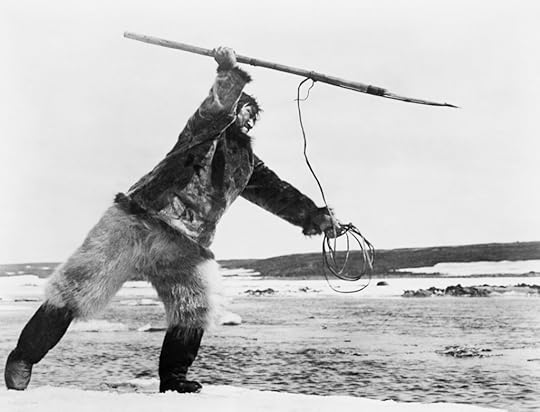 Allakariallak as Nanook in Nanook of the North, 1922
Allakariallak as Nanook in Nanook of the North, 1922© Pathé Exchange Inc. and courtesy Pathé/Photofest
Despite the accolades, Kunuk’s and the Inuit’s contributions to the history and future of film remain largely unheralded. To fully appreciate the significance of Atanarjuat, you first have to understand the film it is in conversation with: Robert Flaherty’s Nanook of the North. Released in 1922, Nanook of the North was a pathbreaking film that some consider to be the first documentary ever made. This designation, however, comes with a heavy asterisk.
Flaherty filmed Nanook of the North between 1920 and 1922. His intention was to portray Inuit culture to white audiences before what was left of traditional life was obliterated by Western modernization. The film follows a celebrated hunter, framing scenes of Inuit labor as though they were dioramas in the American Museum of Natural History. There are scenes of Nanook rowing a kayak, traversing ice floes in search of game, trapping Arctic fox, building an igloo, teaching his son to hunt with bow and arrow, eating raw seal meat, glazing the runners of his sled, harpooning a walrus, and fighting a seal, among many other events. There’s even a part early on where Nanook visits a trading post owned by a white merchant who shows the Inuit a gramophone. Nanook, apparently ignorant of the technology, attempts to bite the record, adding a moment of comic relief undoubtedly designed to make white audiences laugh at him.
Like an anthropologist, Flaherty plays the role of informant, homing in on the Inuit mode of production. But like an artist, he pauses to admire the austere beauty of the Arctic and the Inuit’s ingenuity in living amid it. Every so often, the silent film pauses to interject Flaherty’s written narration, which oscillates between these registers. In the final scenes of the film, Flaherty seems to push beyond these self-imposed limits. His camera captures Nanook savoring a bite of raw seal meat as his wife, Nyla, swaddles their child before leaning in to rub noses with the babe: an “Eskimo kiss.” “The shrill piping of the wind, the rasp and hiss of driving snow, the mournful howls of Nanook’s master dog typify the melancholy spirit of the North,” reads Flaherty’s narration as his camera captures nightfall on the windswept landscape outside Nanook’s igloo.
But here’s the thing: it’s all staged. Nanook is actually a guy named Allakariallak, a veteran hunter from the Itivimuit Inuit whom Flaherty had befriended. The seal Nanook fights on-screen is actually already dead. And by the time Flaherty arrived, many Inuit were well adapted to Western technology. Although Flaherty insisted Allakariallak and the cast wear traditional clothing, the Inuit usually wore a hybrid of Western and Inuit attire. While Flaherty’s Nanook hunted with a harpoon, Allakariallak preferred the firepower of a gun. And while Allakariallak played dumb around the gramophone on screen, in real life, he was well aware of the technology and how it worked.
 Hand-colored lobby card from Nanook of the North, 1922
Hand-colored lobby card from Nanook of the North, 1922© Pathé Exchange Inc. and courtesy Pathé/Photofest
It’s tempting to call Flaherty a fraud and leave it at that. But on the set of Nanook of the North, the Inuit weren’t just paid actors; they were consultants and production staff. Nyla, Nanook’s young wife, was actually Flaherty’s common-law wife; they had a child together. In Inukjuak and Grise Fiord, in Nunavut, there is still a thriving clan of Inuit with the last name Flaherty. Jay Ruby, an anthropologist, has argued that Flaherty collaborated with the Inuit on set. “The Inuit performed for the camera, reviewed and criticized their performance and were able to offer suggestions for additional scenes in the film—a way of making films that, when tried today, is thought to be ‘innovative and original,’” writes Ruby.
Faye Ginsburg, an anthropology professor at New York University, and Fatimah Tobing Rony, a professor of media studies at the University of California, Irvine, have gone even further, claiming that the Inuit served as camera operators. The Akeley cameras Flaherty used were hefty sixty-pound, hand-cranked devices that required a fifteen-pound tripod—all of which, along with massive quantities of 35mm film, needed to be lugged across snowbanks, ice floes, and Arctic waters. And as the film critic Roger Ebert pointed out in a four-star review for the Chicago Sun-Times: “If you stage a walrus hunt, it still involves hunting a walrus, and the walrus hasn’t seen the script.”
These facts would seem to cast Nanook of the North, and perhaps even the whole early history of documentary and nonfiction film, in a different light. If the Inuit were behind the camera—and not merely prehistoric stock characters in the national imaginary—then we must consider the possibility that the prodigious body of work inspired by Nanook of the North was inspired not just by Flaherty’s artistic talents but also by those of his Inuit collaborators. Indeed, many Inuit have long been proud of the work, perhaps aware of their peoples’ contributions to it. And it is perfectly understandable that Inuit audiences would take some pride in seeing their culture—which, like many Indigenous cultures, has been battered by colonization—celebrated on-screen.
In fact, after watching and researching the film, I started to wonder if the paradigm of salvage anthropology was actually an appropriation of the deeply Indigenous desire to preserve and remember the beauty of Native life before the cataclysm of colonization. “The film excited great pride in the strength and dignity of their ancestors, and they want to share this with their elders and children,” Lyndsay Green, operations manager of the Inuit Tapirisat of Canada (now called the Inuit Tapirisat Kanatami), the national governing body representing Inuit in Canada, said of Nanook of the North, which the Inuit Broadcasting Corporation screened into the 1970s. But then, we must also consider the dismissiveness with which Flaherty later addressed his Inuit actors, collaborators, and lovers. “I don’t think you can make a good film of the love affairs of the Eskimo,” he said in a 1949 interview with the BBC, “because they never show much feeling in their faces, but you can make a very good film of Eskimos spearing a walrus.”
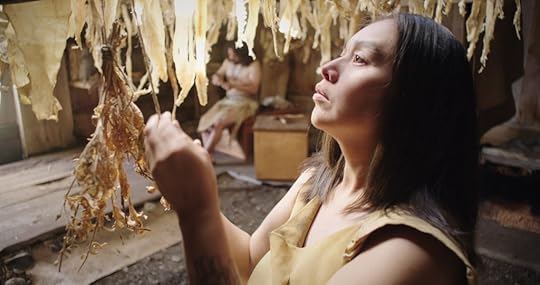 Still from SGaawaay K’uuna (Edge of the Knife), 2018
Still from SGaawaay K’uuna (Edge of the Knife), 2018© Igloolik Isuma Productions and courtesy Niijang Xyaalas Productions
The greatest achievements in creative and intellectual pursuits often entail killing the master: to Plato’s ideals, Aristotle responded with empirics; to Richard Wright’s Native Son, James Baldwin responded with a vicious takedown of his friend and mentor’s novel, collected in Notes of a Native Son; to Jay-Z’s “Takeover,” Nas responded with “Ether.” And for Nanook of the North, there’s Kunuk’s Atanarjuat.
A close examination reveals that Kunuk co-opted many of Flaherty’s creative ticks. Atanarjuat was made with a desire to preserve Inuit culture—but Kunuk does it for an Inuit audience, while Flaherty did it for a white one. And Kunuk’s camera moves in a way curiously similar to Flaherty’s. Kunuk shoots his subjects up close, taking time to pause and let the labor and land of the Inuit unfold for the viewer—inviting the audience to move to the rhythm of Inuit life. In one of the first scenes, where the village is cursed by Tungajuaq, a shaman from the north, the polar bear necklace of the shaman is brought right up to the camera, as though the lens is the viewer’s neck. But instead of narration, Kunuk turns to shamanic fortune and fate to explain the twists and turns of his narrative. It’s not a stretch to view Tungajuaq—a strange and evil outsider—as a metaphor for European colonization.
And yet, in this narrative, Europeans are even denied the right to intrude. Kunuk reclaims many of Flaherty’s conventions—perhaps the same ones that could more accurately be attributed to his Inuit collaborators—to produce what I might describe as an Inuit gaze: a visual style and sensibility particular to his Inuk viewpoint. Like the shaman in his story, he playfully wags a finger at Flaherty at every turn. He even does the very thing Flaherty said the Inuit couldn’t do: make a movie about love. Indeed, the central drama of Atanarjuat—the thing that sets Oki at the protagonist’s throat—is the passion between Atuat and Atanarjuat. This is what makes Kunuk’s film a triumph in the fullest sense: like Sitting Bull and Crazy Horse at the Battle of the Little Bighorn, Kunuk has slain a white giant, for all to see.
 Still from SGaawaay K’uuna (Edge of the Knife), 2018
Still from SGaawaay K’uuna (Edge of the Knife), 2018© Igloolik Isuma Productions and courtesy Niijang Xyaalas Productions
Over the past twenty years, Kunuk and his production company, Isuma, have schooled many Indigenous filmmakers, such as the brothers Gwaai and Jaalen Edenshaw, who cowrote the 2018 film SGaawaay K’uuna (Edge of the Knife), the first movie made entirely in the Haida language. And like Kunuk and the Inuit, the Edenshaws and the Haida were drawn to film as a tool to preserve their endangered language and culture. With their cameras, this new generation of filmmakers is capturing Indigenous worlds imperiled but resilient. Like the Inuit who worked with Flaherty a century ago, these filmmakers are asking some of the biggest and most important questions: What is the responsibility of the filmmaker to his or her community? How do we tell stories about worlds collapsing under the weight of colonization, resource extraction, mass extinction, and climate change? And who has the right perspective to tell those stories? This spring’s unseasonably warm weather—the warmest on record since at least 1958—brought an early melt season to the Arctic. The location where Natar Ungalaaq once bounded across the ice as Atanarjuat will soon be unfit to film such a scene, and likely unrecognizable to Kunuk, the Inuit, and all who have come to properly appreciate their films as well as their monumental contributions to art on this shattered earth.
This essay originally was originally published in Aperture, issue 240, “Native America,” under the title “The Indigenous Gaze.”
For Alan Michelson, History Is Always Present
“My work is very much grounded in the local, in place, and place can be fraught when you’re Indigenous,” says the New York–based artist Alan Michelson.
Michelson, a Mohawk member of the Six Nations of the Grand River, has, for more than thirty years, produced evocative, influential works that excavate colonial histories of invasion and eviction. After an early engagement with photography and painting, he gradually shifted to an expanded approach. Video and installation allowed him to abandon a single perspective in favor of unfixed points of view, creating dynamic spaces of visual and auditory immersion. For Alan Michelson: Wolf Nation, his solo exhibition at the Whitney Museum of American Art in 2019, he deployed the panoramic form, which he likens to wampum belts—beaded sashes used by Native nations in diplomacy. The show parsed history with references to maps and other archival materials, and to Indigenous geography and philosophy, challenging viewers, via augmented reality, to reconsider the museum’s location, once a Lenape site where tobacco was grown for ceremonial use. For Michelson, history is always present, unfinished business demanding our attention and redress.
This spring, during the city’s shutdown due to the COVID-19 pandemic, he spoke with the curator Chrissie Iles about his artistic development, the power of contemporary Indigenous art, and the historical echoes of our public health crisis.
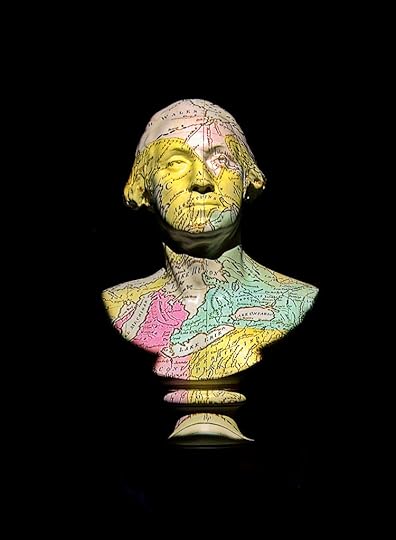 Alan Michelson, Hanödaga:yas (Town Destroyer), 2018. HD video and bondedstone Houdon replica bust, with sound by members of the Six Nations of the Grand River Territory
Alan Michelson, Hanödaga:yas (Town Destroyer), 2018. HD video and bondedstone Houdon replica bust, with sound by members of the Six Nations of the Grand River TerritoryChrissie Iles: In all your work, whether in photography or the moving image, you subvert the camera’s history as an instrument of colonialism by transforming the colonial gaze. What is your relationship to the camera?
Alan Michelson: I got a Nikon camera in my early twenties, at that exciting time in the mid 1970s when Susan Sontag’s On Photography (1977) was current. I was always very visual, always drew and painted, and soon became absorbed in that heightened mode of seeing through a viewfinder. I was living in coastal New Hampshire and would go for long walks and take pictures.
The color in the world was really attracting my eye, moody colors and motifs with implicit references to landscape painting and abstract painting. Later, at the Boston Museum School, many of my teachers were from the generation of Abstract Expressionism and Color Field painting, when artists had turned away from external representation to an internal set of coordinates, where color and gesture were more important.
Iles: How did your work develop after art school?
Michelson: After art school, I gradually moved away from the vertically oriented pictorial space of painting to the receptive, horizontally oriented space that Robert Rauschenberg opened up, Leo Steinberg’s “flatbed picture plane,” where photographic imagery could become palette and two-dimensional imagery could coexist with objects. The kind of space that when applied to a room became installation. And I was fascinated by the possibilities of site specificity, because I’ve always been attracted to history as much as to form. I cycled through all of that to installation, and started really thinking about how history had treated Native people.
 Alan Michelson, Still from Mespat, 2001. Video, turkey feathers, monofilament, and steel, with original soundtrack by Michael J. Schumacher
Alan Michelson, Still from Mespat, 2001. Video, turkey feathers, monofilament, and steel, with original soundtrack by Michael J. SchumacherIles: How did Indigenous knowledge systems, survivance, and a resurfacing of suppressed histories become the substance of your work?
Michelson: I would say that some of my recent work has its roots in my first video, Mespat, which was made in 2001. Valerie Smith invited me to participate in Crossing the Line at the Queens Museum and make work based on the borough of Queens. I was interested in looking at its shoreline from a boat, from the viewpoint of the early explorers, as well as of my ancestors, because waterways were really the highways in those days. It’s not a view that you often see. And I also wanted to reference moving panoramas of the nineteenth century, the ones that simulated marine travel.
So I mounted a camera on a boat and sailed up Newtown Creek, an industrial waterway contaminated by more than a century of oil spills, chemicals, and sewage, a Superfund site. The marine mount enabled a smooth, continuous dolly shot of more than three miles of its shoreline, including scrapyards, bridges, and refineries. I was aware of Michael Snow’s Wavelength (1967) and Andy Warhol’s Empire (1964), and like those films, there was a banal aspect to it. I was just observing what was there. And what was there was a stark catalog of industrial life and death, with the hopeful exception of a white egret.
Iles: You described your engagement with photography in the ’70s, at a moment when photography was an important conceptual medium, especially for Land art and Land artists. What do you think about the ways in which Land art often ignored Native American history and presence?
Michelson: Well, colonists assumed the identity of “Americans.” For Euro-Americans, that meant an entitled legacy, to imagine that the land was American land and no longer Native land with a history. The dearth of historical context in Land art seems to reflect that sense of entitlement, as does its unacknowledged but obvious debt to Native mounds and its sheer grandiosity. However, there’s also a dystopian undercurrent in Land art that can even be seen in the work of Hudson River School painters like Thomas Cole. My favorite work of his is The Course of Empire series (1833–36), in which he painted an imagined landscape and charted its evolution from “The Savage State” to its own self-destruction.
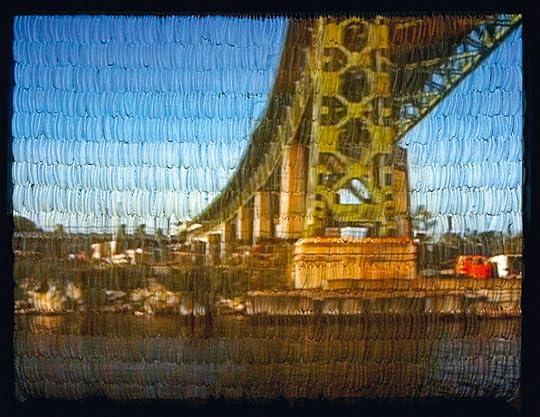 Alan Michelson, Still from Mespat, 2001. Video, turkey feathers, monofilament, and steel, with original soundtrack by Michael J. Schumacher
Alan Michelson, Still from Mespat, 2001. Video, turkey feathers, monofilament, and steel, with original soundtrack by Michael J. SchumacherIles: Do you think there’s a relationship between that moment and today?
Michelson: Yes, in this current mess that we’re in with COVID-19, Cole’s allegory has never rung truer. This pandemic is coming from the cross-species migration of a viral infection from animals to humans. Eurasian farming resulted in humans living intimately with animals for thousands of years, during which time those large mammals had viral infections that they passed to human beings, the source of epidemics to which European and Asian people eventually built up immunity.
But conditions here on Turtle Island, our name for North America, were very diff erent, and there were really no domesticated mammals here besides the dog. So, our people had no immunity. To them, the diseases that came over with the colonizers—smallpox, measles, the flu—were deadly, novel viruses. The entire world is now experiencing what our ancestors experienced when European colonizers invaded.
Iles: How does this manifest in Mespat?
Michelson: I was interested in the way that the colonial gaze became an American gaze that didn’t acknowledge itself as colonial; it conceived of itself as entitled. And that colonial sense of entitlement is present not only in landscape painting but in off shoots like panoramas, which offered virtual means of touring “exotic” places minus the expense or risk. Mespat is a counterpanorama, in video pixels and feathers instead of paint, of colonial displacement and destruction.
Iles: Clémence White points out in her essay “Alan Michelson: Site Readings” for the 2019 Whitney exhibition Alan Michelson: Wolf Nation that the horizontality in your work “centers Haudenosaunee culture through its relationship to the wampum belt,” and “Haudenosaunee theology, which proposes that the ‘interconnectedness of all life is sacred and key to human freedom and survival.’” Panoramic photography was very popular in the nineteenth century as part of opening up the world and, at its root, is colonial. You use this perspective as a form of resistance by applying it back to a kind of ethical and social interconnectedness of Native American philosophy and spirituality.
Michelson: Extreme horizontality, extension in space, is always extension in time. Viewing panoramic work entails movement and perspectival shifts, the experience of multiple vantage points rather than a single fixed one, which is consonant with the egalitarianism of Native communities. Also, immersive work becomes interactive, a dynamic environment that activates a dialogue, or a set of relations, reflective of our relational epistemology. My appropriation of colonial formats is informed by those ethics. What do they call it when people restage Civil War battles?
Iles: Reenactments.
Michelson: Yes! Then you could say that my sailing up Newtown Creek, retracing the route taken by the first colonists of what became Queens, was a reenactment. If you can keep 1641 [the year before the colonists displaced the Mespeatches] in mind in 2001, it sets up a dialectic between what you see in 2001 and what was there in 1641.
I’ve also been fascinated with wampum belts, a powerful Haudenosaunee and Eastern Woodlands cultural institution, belts made up of hundreds of shell beads, purple and white, that were used to seal agreements. They were documents, codes, even, but they also embodied the natural world because they were made of the shells of animals. They were also collective works, originating in shellfish gathered by the people as food, recycled as beads, and then woven into patterns that carried messages. I based a four-channel video piece, TwoRow II (2005), on a key wampum belt, the Kaswentha, also known as the Two-Row Wampum. In 1613, we made a trading agreement with the Dutch symbolized in the belt by two rows of purple beads separated by three rows of white. The purple rows represented the parallel courses of two vessels on a river, our canoe and their sailing ship, and the white rows peace, friendship, and mutual respect. In my piece, filmed from a tour boat on the Grand River at Six Nations Reserve, there are two rows of panoramic video moving in opposite directions, one of the non Native townships on the east bank and the other of the reserve on the west, with a soundtrack featuring conflicting narratives about the river—that of a Canadian tour-boat captain and those of Six Nations elders.
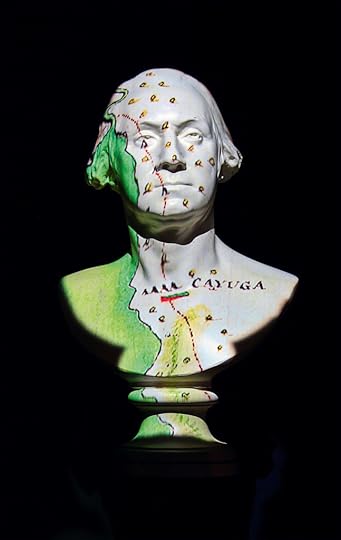 Alan Michelson, Hanödaga:yas (Town Destroyer), 2018. HD video and bondedstone Houdon replica bust, with sound by members of the Six Nations of the Grand River Territory
Alan Michelson, Hanödaga:yas (Town Destroyer), 2018. HD video and bondedstone Houdon replica bust, with sound by members of the Six Nations of the Grand River TerritoryIles: For your works Hanödaga:yas (Town Destroyer) (2018) and Theatrum Orbis Terrarum (Theatre of the World) (2019), which Zuecca Projects showed in Venice last year, you combine the photographic image with maps, drawings, and sound in a form of collage that operates as a resistance to surveillance and a single viewpoint. How do you use the photographic image and the archive to resurface memory and history?
Michelson: Photographic imagery and its documentary aspect are important in my work, both in its moving and still form. I like to use the archive against itself, to challenge the colonial narratives it usually serves. Hanödaga:yas (Town Destroyer) is a projection onto an iconic bust of George Washington by the French sculptor Jean-Antoine Houdon. In 2018, the approaching 240th anniversary of Washington’s 1779 destruction of Iroquoia—our extensive homelands in what is now New York State—prompted me to get a life-size replica bust and project archival imagery onto it to tell the story of invasion and forced eviction. The imagery includes historical maps and New York State historic markers, which seem to celebrate genocide, commemorating, for example, “Site of Catherine’s Town, destroyed 1779 by General Sullivan.” My video pans over the map of the campaign, pausing at the places where Washington’s armies destroyed Iroquois villages, all of it playing out over his face. One of my goals is to defeat American amnesia and denial.
Iles: You use three-dimensional surface and form to deepen and trouble the storytelling of the projected image. How did this work in your Venice piece Theatrum Orbis Terrarum (Theatre of the World)?
Michelson: Well, the exhibition was about Venice’s role in the early exploration of the Americas.
I had the idea of projecting archival material onto a globe, because that’s essentially what European exploration was—global projections of European power and avidity.
Then I had the idea of doing four of them, referencing the Four Directions and a chart from Andreas Cellarius’s 1660 celestial atlas, Scenographia Systematis Copernicani, depicting four hemispheric globes illuminated by a central sun. I thought, Well, I could do something like that by projecting video onto four spheres.
The first surface I projected onto, in Mespat, was the shallow convex surface of white turkey feathers. The second was the more complex dimensionality and iconography of the bust of Washington. The third was an ideal form, the sphere, but also the form of the world. I’m getting more grandiose as I progress.
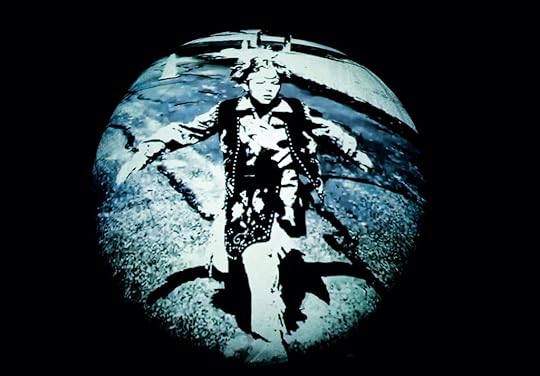 Alan Michelson, Still from Theatrum Orbis Terrarum (Theatre of the World), 2019. Four-channel video installation with marine buoys
Alan Michelson, Still from Theatrum Orbis Terrarum (Theatre of the World), 2019. Four-channel video installation with marine buoysIles: This progression is creating what could be described as an Indigenous cinematic. You are rewriting the parameters of the Western history of cinema—a single rectangular screen with a fixed frontal viewpoint and fixed seating—by inscribing Indigenous value systems of horizontal power, shared space, and cyclical time into the projective space. Your use of diff erent material forms as projective surfaces also reframes the cinematographic as something that’s not defined by the West or by American and European—
Michelson: Rectilinearity.
Iles: Yes.
Michelson: Western architecture’s basic program. And of the grid system settlers applied to land, the checkerboards visible from airplanes.
Iles: Last October, during your exhibition at the Whitney, we organized a panel on contemporary Indigenous art in a global context, in which we considered Indigenous communities as the first global communities and discussed their relationships to one another.
Michelson: Both of my fellow speakers at that panel, the Australian Aboriginal artist Richard Bell and the Anishinaabe curator Wanda Nanibush, had previously participated in a 2017 initiative called “Indigenous New York” that I founded and curated with the Vera List Center for Art and Politics, which opened up space for contemporary Indigenous art in New York. The vitality of global Indigenous art was not registering on New York’s radar, and we were trying to save New York from self-fossilizing! Certainly in other places, including Australia, New Zealand, and Canada, Indigenous art was more visible. We hosted some seminal discussions between Indigenous curators, critics, and artists, and their non- Indigenous counterparts. Contemporary Indigenous art is on the rise these days. It has the power not only of aesthetic beauty but of ethics and calling for justice, which are also beautiful.
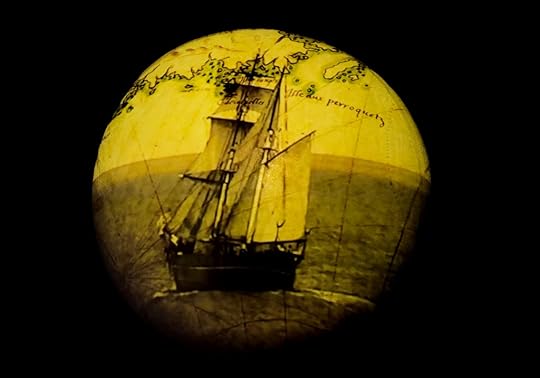 Alan Michelson, Stills from Theatrum Orbis Terrarum (Theatre of the World), 2019. Four-channel video installation with marine buoys
Alan Michelson, Stills from Theatrum Orbis Terrarum (Theatre of the World), 2019. Four-channel video installation with marine buoysIles: Those discussions underline the powerful role photography and the moving image can play as forms of witnessing. The use of the camera as a witness obliges you to think about who is behind the camera, and how that operates in an environment in which democratic image making and the circulation of images through social media challenge official versions of whatever the truth might be. The vertical perspective of drones, which takes the camera away from the eye and the body, into a disembodied space of surveillance—
Michelson: Which can also be a military space.
Iles: Exactly. It seems that the ethics of the photographic or cinematographic image are even more compelling than ever.
Do you think the current COVID-19 crisis will change us all forever and the world forever? How do you see it affecting your work and your thinking?
Michelson: I think this crisis is brushing back a lot of the sense of entitlement that people have, maybe making them think more about the planet and our interconnectedness. It’s laying bare gross folly and injustice. I’m agitated by the fact that another raging pandemic is devastating Native people, descendants of the victims of so many previous epidemics of deadly diseases brought to Turtle Island, and that once again the federal government is not delivering on its treaty obligations.
Iles: That shared space can be both Indigenous and non-Indigenous, which seems even more important in relation to what you posted about Indigenous communities not being recognized in government statistics about COVID-19.
Michelson: Yes, even in New York, a liberal city with the highest population of Native people in the country. Right now, in May, the infection rate of the Navajo Nation has surpassed that of New York and New Jersey. Due to the ongoing effects of colonization, Native people are a hugely high-risk group, and they’re not getting direly needed supplies in Indian country.

Alan Michelson, Still from Wolf Nation, 2018. HD video, with sound by Laura Ortman
Iles: Which means that the communities are effectively absent, and therefore don’t exist, and cannot get the support they need to fight the virus. The pandemic is exposing, in stark terms, the economic and political realities of inequity.
Michelson: I’m amazed, Chrissie, how the nineteenth-century trope of the “vanishing Indian” persists, and how government policy continues to reflect that.
Iles: Yes.
Michelson: In times of crisis like this, will doors that have been recently opening close again, and will there just be a reassertion of privilege by those who are most privileged? That can happen on so many levels beyond the art world.
Iles: Yes. This situation is a dress rehearsal for what’s coming in terms of climate change.
Michelson: The signature work in my Wolf Nation exhibition was my 2018 video of that title, which I made for the Indicators: Artists on Climate Change exhibition at Storm King Art Center. People wonder about when and how wolves became dogs. I was thinking about the wolves of Turtle Island, and how we have wolf clans and a profound sense of kinship with animals. Through the cooperative model of the wolf pack, wolves may have taught human beings how to hunt, which is a huge thing, if you think about it. And yet, wolves, like Native people, were themselves hunted and removed. As is clear from converging crises, we urgently need to confront our tortured history and our disastrous leadership, and rethink our current political, economic, social, and environmental models. Indigenous models, including those of survivance, active presence, and resistance, provide an alternative.
Iles: Absolutely. Your work embeds a new social ethics of survivance in the screen, the camera, and the projective space. The old social, political, and cultural models don’t work and are disintegrating. We are entering a new reality, and culture is changing fast. Your work is a map that can help us navigate a different kind of future.
This essay originally was originally published in Aperture, issue 240, “Native America,” under the title “History is Present.”
All works courtesy the artist.
September 29, 2020
Daido Moriyama on the Unending Newness of Photographs
Japanese photographer Daido Moriyama has been at the forefront of the medium for more than fifty years, first rising to prominence through his contributions to Provoke—a magazine founded by art critic Koji Taki, photographers Takuma Nakahira and Yutaka Takanshi, and poet Takahiko Okada, which published from 1968–69 and fundamentally reshaped postwar Japanese photography. Moriyama has since become one of the world’s most recognized photographers, inspiring generations of image-makers.
Shooting predominantly on the streets of Tokyo with a small, handheld camera, Moriyama’s signature grainy and blurry black-and-white photographs explore themes of urban street life, intimacy, pattern, and light. Throughout his career, Moriyama has published over 150 books—including Labyrinth (Aperture, 2012) and Printing Show—TKY (Aperture, 2011), a performative, DIY book, created live at Aperture Gallery in New York.
Now, for two weeks only, Aperture is pleased to offer three exclusive, 8-by-10-inch, gelatin-silver prints by the legendary photographer, each sold in an edition of 150 for $275.
“Photographs are a medium opened to everyone. However, at present day, original prints are sold upon request of the art market, often produced as a limited edition while eventually just few pieces are purchased. I think that this is the opposite of the original essence of photography. For all these reasons I usually don’t add editions to my works. The value of a photograph is not higher if produced in a limited edition and lower if produced in larger quantities. No matter how many copies of an amazing photo are printed, its artistic value won’t be diminished. On the contrary printing and distributing around the world large numbers of photos isn’t rather the best way to show the potential of photography?” Moriyama states. “That said, as I am not a straightforward person, it rarely happens that I issue a special edition of a photobook or any edition for a specific purpose. The purpose of this sale is to support Aperture, which is why I decided to limit the edition and offer these prints at a lower price than usual.”
Read more from Moriyama below, in an interview with Ivan Vartanian from Aperture Conversations: 1985 to the Present (2018); and shop the prints, available exclusively through Aperture through October 8, 2020.
—The Editors
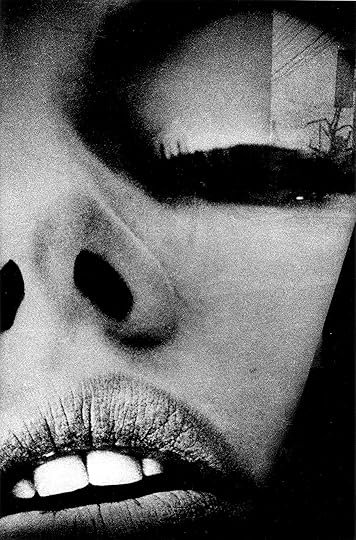 Daido Moriyama, Eros or Something other then Eros, 1969
Daido Moriyama, Eros or Something other then Eros, 1969Ivan Vartanian: Could you speak about your thoughts on the connection between image and language?
Daido Moriyama: Language is a direct medium and communicates meaning and intention straight. A photograph, on the other hand, is subject to the viewer’s memory, aesthetics, and feelings—all of which affect how the photograph is seen. It isn’t conclusive the way language is. But that’s what makes photography interesting. There’s no point in taking photographs that use language in an expository way. Taking photographs for the purpose of language is for the most part meaningless for me. Rather, photography provokes language. It recasts language; within it, various gradations outline a new language. It provokes the world of language: looking at images leads to the discovery of a new language.
That is what I am about. Certainly, photographers—in particular photographers like me, who take street snaps—don’t shuttle back to words with each shot. The outside world is suffused with language. I don’t carry language and apply it to the outside world; instead, messages come in from the outside. That is what provokes me and what I react to. That is the nature of the connection, I think. That said, I cannot explain every image that I have taken. If I tried to, it would be a sham and boring; it would come across as trivial. That’s not the intention. Each photograph is felt, but there isn’t just one reason for releasing the shutter— there are several reasons, even with a single exposure. The act of photographing is a physiological and concrete response but there is definitely some awareness present. When I take snapshots, I am always guided by feeling, so even in that moment when I’m taking a photograph it is impossible to explain the reason for the exposure. Something might, for example, seem erotic to me. That in itself is a gradation that contains a multiplicity of elements.
Vartanian: In your early magazine work, your photographs are often accompanied by texts you’ve written in an “editorial voice” of sorts.
Moriyama: When I was young, I used to write accompanying texts for my images. Those writings had something of a didactic relationship with the images. In the end, the language with which the viewer sees the photograph changes the image’s content. Even if I chose a word or language with which to take an image, it would be impossible to have everyone feel the same way. Perhaps by chance, a viewer may have a similar feeling.
In working with my older photographs, I treat them as if they are something new—if I didn’t, presenting older work would be pointless. What I photographed at a certain point may have been vivid at the time, but with the passage of years, its luster weathers with it. All work is subject to format, ways of looking, editorial style—all of which influence and alter the work. That process of alteration is one of the things I love about photography. In essence, through the process of recomposing the work, the photograph is revitalized as something that is contemporary—now. This can be done countless times with any image. In a way, this is like saying that within each image, there is a multitude of possibilities. A single photograph contains different images.
I happen to have produced many books of photographs. I work with others on them—people I trust to a certain extent—and I leave it to them to do the recomposition (as, for example, with Shashin yo, Sayonara [Farewell Photography, 1972]). The work becomes more vivid than when I do it myself. If I do it myself, I cannot avoid being influenced by memory; I strain to stave off that impulse and inadvertently create a palpable tension—and the outcome is often odd! Whereas when I work with a third party—or even someone more removed—filtering the images through their eyes, the photographs come alive, I think. Photographs that I’ve taken ten years ago even now seem vivid. If an image is good, it is brought back to life by the feelings of the viewer.
 Daido Moriyama, EROS, from the series Provoke 2, 1969
Daido Moriyama, EROS, from the series Provoke 2, 1969Vartanian: What about the function of the photograph as information? Your work, especially from the 1970s, has so much to do with destabilizing this aspect of photography.
Moriyama: Photographs of any generation are in a basic sense, at that moment, information. Photography is underpinned by information. No matter how conceptual a photograph may be, it contains information at its most fundamental level. But the means by which information is communicated is specific to each generation. A recently shot photograph is just as viable to me as one shot ten years ago.
Vartanian: Do you make a distinction between the different media in which your work appears—magazines and books, exhibitions?
Moriyama: I don’t generally make a distinction between them. A magazine has a particular objective, namely it is about the now. In that sense, it uses the information aspect of photographs. And depending on the editorial direction, the photographs may radically change. So if the editorial direction of a particular magazine doesn’t sit well with me, I don’t allow my photographs to be used in it. But in principle, whether a photograph is framed and mounted as part of an exhibition or shown in a photobook or magazine—these are just different modalities of the same image. Each is interesting in its way. For that reason, I don’t place a lower ranking on magazines. At times, in fact, the magazine reproduction has been the best format for an image, trumping other forms. Again, what interests me is seeing my photographs in a manner that makes them seem different. And in the magazine context, if the photograph doesn’t come alive, it doesn’t necessarily mean there was something wrong with the editorial direction; it probably means the photographs aren’t that strong. There are two sides of a coin.
Vartanian: Your work is largely black and white. How do you think of color in relation to black-and-white work?
Moriyama: There isn’t much difference between photographing in color or black and white. I am someone who has been making black-and-white photographs forever— and to be honest I still prefer black and white. But part of what makes color photography interesting to me are digital cameras. With film cameras, your choice is made once the film is loaded. With digital, on the other hand, something that is shot in color can be converted to black and white. So for the time being I am shooting in color.
Monochromatic photography is conventionally thought of as having more symbolic, abstract, dreamlike qualities. But I don’t necessarily think that just because an image is in color it is closer to reality. Recently, many people have been asking me why I’m photographing in color. It is tantamount to asking me why I am using digital to shoot. What difference does it make? Particularly outside of Japan, there is an eagerness to have a clear-cut reason behind every choice, I find. (The same goes for explanations about the images themselves.) But there isn’t any real need to provide these answers. Making a definitive declaration of intent or meaning kills the photograph. Whether I want to print something in color or make it black and white all has to do with what I am feeling at the time.
One distinction I can make—I’ve written about this in my essays: black-and- white photography has an erotic edge for me, in a broad sense. Color doesn’t have that same erotic charge. It doesn’t have so much to do with what is being photographed; in any black-and-white image there is some variety of eroticism.If I am out wandering and I see photographs hung on the walls of a restaurant, say, if they are black and white, I get a rush! It’s really a visceral response. I haven’t yet seen a color photograph that has given me shivers. That is the difference between the two.
But my interest in color is increasing. Sometimes when I see one of my black-and-white photographs, I think to myself: “That’s a Daido Moriyama image.” Whereas color work seems wholly different to me—still, there is something good about it. So what interests me is seeing my own work differently: the new, vague feeling of accepting the color work as my own. That is where I am now. At that vague, flickering stage.
 Daido Moriyama, Yokosuka, A Japanese Town, 1971
Daido Moriyama, Yokosuka, A Japanese Town, 1971Vartanian: There is a tendency now to think of photography in terms of themes or concepts.
Moriyama: There are no themes in my work. It may be difficult for this to be understood outside of Japan—and indeed, often my work is understood as having a theme. Even if I were to construct a theme (and it’s not as if I’ve never done so), I can’t really think about it as I’m working. It is too limiting, and the camera work becomes restricted. Within that constraint the photograph becomes a fabricated image, and for me that is meaningless. The work I am shooting now is being done in Tokyo, but I don’t necessarily think of it as having a theme that is “Tokyo.” With a predetermined theme, possibilities are reduced, and the conversation then becomes one of form. That’s not something that I am capable of doing, really.
Vartanian: Many of your early writings about your photography discussed the sensation of taking photographs, which you often describe sometimes as “haziness” but mostly as a sort of “stimulation.” Has this changed for you? What’s the sensation of taking photographs now?
Moriyama: Nothing is really different. The passing decades change how we see—but basically I have always been shooting for exactly the same reason. The shock that comes from the outside world. That’s why imposing a theme drains photography of its spark. The outside world is extremely fluid and mixed up. Wrestling it into a “theme” is an impossibility. That mix in its totality cannot be photographed. Within a thin sliver of this world, only the thinnest of segments can be recorded with the photograph—but I keep photographing. There is nothing else.
With conceptual photography or with a prescribed theme, it is more or less apparent if the photograph is a success or not. When the object of the photograph is the city, it’s far from clear whether the photograph is working.
In one way, it is a very naive way of thinking. But to shoot images is to receive shocks from the outside world. I don’t maintain that awareness for extended periods while shooting, but through the outside world my own consciousness changes.
So, in relation to the city, I face the world and with this tiny camera I take photographs. Whatever the city—not only Tokyo—it is suffused with art; it is overflowing with the stuff. With that, I get a jolt of adrenaline. Once you experience that actuality you are unable to take any other kind of photographs.
Having said that, there are also instances when I work with assigned subjects, like the photographs I am taking now at the University Museum at the University of Tokyo. It’s not a subject I chose myself but it is interesting to me. Looking for the bizarre and fantastic within that cordoned-off area intrigues me—partly precisely because I don’t usually take photographs like this. Say I am asked to photograph a singer; my camera work really isn’t well suited for such work, but somewhere in the course of making the image, it becomes interesting. And from that session, one of the shots might make it into my printed work, and it is then entirely detached from its original meaning. There are no hard and fast rules with what and how I shoot.
It may seem strange to say, but I believe in the outside world of the city more than I believe in myself. I think it is through it that change happens. I have been this way since I was young. Feeling the world to be a threat. It’s a continual anxiety— but there’s nothing to be done about it. There are times when I am by myself at home at night, and I start thinking about the city’s Shinjuku area at night, and how interesting it must be—it becomes difficult for me to sit still.
Photography never reaches a state of completion. That is what makes it interesting—amazing. When I was young I made projects like Farewell Photography. It was all fiction. Although, for me at that time, it was a form of reality. It was excessive. Pop, cheap junk, scandal, accident, somewhere in the day-in-day-out, there is something extraordinary. There is a ton of it. That is what I am interested in. That is what I respond to.
Through October 13 during our special print sale, collect three exclusive silver-gelatin 8-by-10-inch prints by Daido Moriyama for $275 each.
This interview was originally published in Aperture Conversations: 1985 to the Present (Aperture, 2018). All images courtesy Daido Moriyama Photo Foundation and Akio Nagasawa Gallery.
7 Essential Japanese Photobooks
The photobook has become central to the development of Japanese photography, particularly in its postwar phase. Today, influential volumes by artists such as Masahisa Fukase, Eikoh Hosoe, Rinko Kawauchi, and more continue to inspire generations of artists and book makers.
Coinciding with the release of new limited-edition prints by Daido Moriyama, we have gathered these seven essential volumes, both new and classic, by Japanese photographers.
 Naoya Hatakeyama, #0909, 2008, from the series Yamate Dori
Naoya Hatakeyama, #0909, 2008, from the series Yamate DoriCourtesy the artist
Naoya Hatakeyama: Excavating the Future City, 2018
For the past thirty years, Naoya Hatakeyama has undertaken a photographic examination of the life of cities and the built environment. Each of his series focuses on a different facet of the growth and transformation of the urban landscape—from limestone quarried by explosive blasts, to the evolution of a city from a bird’s-eye view, to the recovery and reconstruction of the artist’s tsunami-swept hometown in northeastern Japan—capturing the phases of creation, change, and destruction over time in Japan’s contemporary topographies. Mapping the growth and expansion of these sites, Hatakeyama’s photographs hauntingly embody the death and rebirth of cities, not just creating a record of their past and present, but also providing a possibility of imagining and projecting their future.
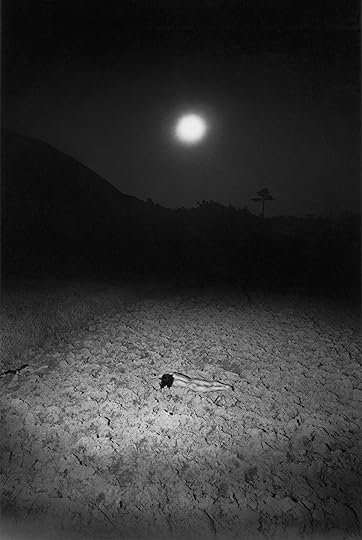 Eikoh Hosoe, from Kamaitachi (Aperture, 2009)
Eikoh Hosoe, from Kamaitachi (Aperture, 2009)Courtesy the artist
Eikoh Hosoe: Kamaitachi, 2009
Eikoh Hosoe’s groundbreaking Kamaitachi was originally released in 1969 as a limited-edition photobook of one thousand copies. A collaboration with Tatsumi Hijikata, the founder of ankoku butoh dance, the volume documents their visit to a farming village in northern Japan, in which they created an improvisational performance with local villagers inspired by the legend of Kamaitachi, a weasel-like demon who haunts rice fields and slashes people with a sickle. The resulting photographs document Hijikata’s spontaneous interactions with the landscape and people they encountered, combining performance and photography in a personal and symbolic investigation of Japanese society during a time of massive upheaval. In 2005, Aperture collaborated with Hosoe to release a limited-edition facsimile of the original book, before releasing a new edition reworked by original designer Ikko Tanaka in 2009, featuring never-before-published photographs alongside texts by Donald Keene and Suzo Takiguchi.
 Rinko Kawauchi, Untitlted, 2017
Rinko Kawauchi, Untitlted, 2017Courtesy the artist
Rinko Kawauchi: Halo, 2017
In recent years, Rinko Kawauchi’s photographs of tender cadences of everyday living have begun to swing further afield. In Halo, Kawauchi expands her previous inquiry of spirituality, photographing three main themes: Lunar New Year celebrations in China (where a five-hundred-year-old tradition calls for molten iron hurled in lieu of fireworks), the southern coastal region of Izumo, and her ongoing fascination with the murmuration of birds along the coast of Brighton, England. The resulting images knit together a mesmerizing exploration of the spirituality of the natural world, contemplating cycles of time, implicit and subliminal patterns of nature and human ritual, and the larger spiritual forces at play.
 Hiroji Kubota, Anshan Steel Mill, Liaoning, China, 1981
Hiroji Kubota, Anshan Steel Mill, Liaoning, China, 1981Courtesy Hiroji Kubota/Magnum Photos
Hiroji Kubota Photographer, 2015
From his coverage of the Black Panther Party in the mid-1960s to his incomparable access to North Korea, Hiroji Kubota has prolifically captured the histories of diverse cultures for over fifty years. Rooted in his experience of a Japan ravaged by destruction and famine at the end of World War II, Kubota’s photographs are characterized by a desire to find beauty and honor in human experience. “The fine quality of Hiroji Kubota’s photographs is that they are single-minded and immediate, and need no interpretation,” Elliott Erwitt writes. “His skill is observation without artifice, documentation without judgement.” Hiroji Kubota Photographer is the first comprehensive survey for the veteran artist, featuring over four hundred photographs from his many extended trips throughout China, Burma, the US, North and South Korea, and his home country of Japan.
 Hiroshi Sugimoto, El Capitan, Hollywood, 1993
Hiroshi Sugimoto, El Capitan, Hollywood, 1993Courtesy the artist
Hiroshi Sugimoto: Black Box, 2016
Since the 1970s, Hiroshi Sugimoto has explored ideas of time, empiricism, and metaphysics through surreal and formalistic photographs. A self-described “habitual self-interlocutor,” Sugimoto uses the camera as a bridge between abstract questions and the quiet, comical nature of modern everyday life—with subjects ranging from Madame Tussaud’s wax figures, to wildlife scenes at the American Museum of Natural History, to two-hour-long exposures of film screens in movie theaters. “Despite being contemporary, Hiroshi Sugimoto’s images seem archetypal and atemporal,” Iran do Espírito Santo reflects, “curious qualities to find in photographic images, since they normally record a fleeting instant.”
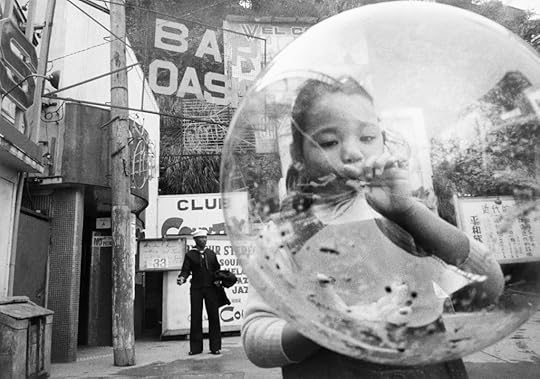 Shomei Tomatsu, Yokosuka, 1959
Shomei Tomatsu, Yokosuka, 1959Courtesy Shomei Tomatsu-Interface
Shomei Tomatsu: Chewing Gum and Chocolate, 2014
Shomei Tomatsu’s Chewing Gum and Chocolate is a defining portrait of postwar Japan by one of the country’s foremost twentieth-century photographers. Beginning in the late 1950s, Tomatsu committed to photographing as many of the American military bases in Japan as possible, focusing on the seismic impact of the American victory and occupation: uninformed American soldiers in the red-light districts, foreign children at play in seedy landscapes, and the emerging protests and counterculture formed in response to the ongoing American military presence. Tomatsu originally named the series Occupation, later changing it to Chewing Gum and Chocolate to reflect the handouts given to Japanese kids by the soldiers—sugary and addictive, but ultimately lacking in nutritional value.
 Cover and interior spread of Japanese Photobooks of the 1960s and ’70s (Aperture, 2009)
Cover and interior spread of Japanese Photobooks of the 1960s and ’70s (Aperture, 2009)Japanese Photobooks of the 1960s and ’70s, 2009
During the 1960s and ’70s in Japan, the photobook overtook prints as a popular mode of artistic dissemination. This process has expanded to an extent where any discussion of Japanese photography now has to include the book. Today, the most famous of works—such as Masahisa Fukase’s Ravens (1986) and Eikoh Hosoe’s Man and Woman (1961)—continue to inspire generations of artists. Featuring forty definitive publications from the era (both iconic works and forgotten gems), this volume examines the distinct character and influence of the Japanese photobook, placing it within a larger sociological context.
As part of our special print sale with Daido Moriyama, expand your photobook library and save 30% off these Japanese photobooks through October 13 at midnight ET.
September 28, 2020
Gus Aronson’s Tokens of New York in the Age of Isolation
It’s a phrase you don’t hear too much anymore, and no one quite agrees on its origins. It’s a warning to the wide-eyed against being swindled. It’s a reference, perhaps, to the tokens at a fairground, whose value disappears when the lights go off. “Don’t take any wooden nickels,” Ann cautions her husband, Peter, in Edward Albee’s play At Home in the Zoo (2004), but Peter doesn’t know the old adage. He meets an unhinged man in a park, someone who thinks differently and suffers from too much solitude, and the encounter doesn’t end well. During the Great Depression, a bank in Washington state ran out of money and issued wooden nickels. In 2004, during the Iraq War, a retired US Air Force sergeant manufactured wooden nickels to support the troops. You couldn’t use them in a vending machine, but that wasn’t the point. Their value was patriotic, mystical. You had to believe, and if you did, you were all the richer.
Not long ago, Gus Aronson, a twenty-two-year-old photographer and filmmaker, was in Highbridge Park, in Upper Manhattan, photographing skaters at a skate park, when he met a man dressed in sequins and carrying two slabs of drywall. The man wore a spectacular necklace, and when Aronson asked him about it, the man said it was a symbol of recovery. “We had a conversation about COVID, about the future,” Aronson said recently. “He thinks that everything’s about the number six in society. The mask is a sixth sense. You have to be six feet apart. But then he says, ‘Three is the future.’” The man thinks there should be a three-party system in government. He wants homelessness to be written into the US Constitution. He wants to form a skate team in Washington Heights, and he’s been talking to school principals about coaching it. Was he peddling wooden nickels? “He’s very adamant that people need to respect each other and love each other more,” Aronson said.
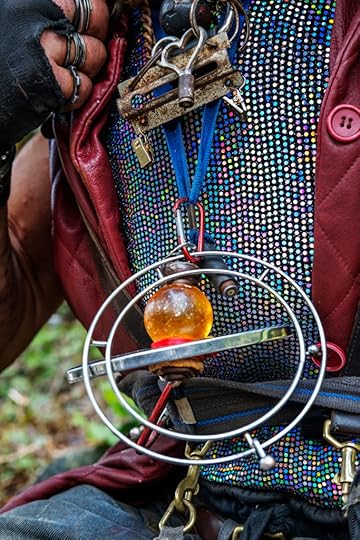
Aronson grew up in Riverdale, a Bronx neighborhood west of Van Cortlandt Park along the Hudson River. He graduated from Bard College in May, and like a lot of students and postgraduates in our age of pandemic, he has returned to living in his childhood bedroom—above the door, there’s a sign that reads, “Sanctuary.” Aronson took most of the photographs in his new series Tokens from an Unled Life (2020) in and around Yonkers, Upper Manhattan, and the Upper West Side. He was searching for a way to accept the present, to allow opposite and contradictory phenomena to coexist; like the photographers Tim Davis and Torbjørn Rødland, Aronson has an eye for vivid color and ambiguous narrative. There’s an echo of Albee’s play in Aronson’s chance meeting with a skate park prophet, but he drew his series title instead from Joan Silber’s shrewd 2017 novel, Improvement, which traces how the subtlest, most impulsive decisions can have a devastating effect, setting in motion a course of events that might remain concealed from you forever. In one scene in rural Turkey, Dieter, a young German who raids archaeological digs for treasures to sell abroad, gives an American named Kiki a tarnished Ottoman coin: “‘Not so valuable,’ he said, looking into her eyes. ‘Only good to look at.’ Kiki still had it, a token from an unled life.”
Throughout Aronson’s peripatetic wanderings in New York’s emptied-out streetscape, he found tokens and totems, signs that could be taken for wonders. In Yonkers, outside a police recreation center, a man’s face has been ripped from a banner, leaving only a bodily shape in military fatigues and an American flag with a gaping hole. A bottle of Lexapro, the antianxiety medication, becomes a portal to another world; the bottle maker’s slogan, raised in amber plastic, is “Safe & Friendly.” In the window of an Upper West Side shop, Aronson found a painted tableau of US presidents—Johnson, Obama, Clinton, Kennedy, and Truman are all there, cheerfully playing pool—that appears to slide, like a double-exposure, beneath a glass-reflected street scene. (The painting, Callin’ the Red, is by Andy Thomas and strangely, it appears duplicate, in a frame on the wall behind Obama’s smiling face.) One delicate image in Tokens of an Unled Life is a grid of headshots of firefighters. Their names, like some of their impressive moustaches, reveal only the slightest biographical detail. In this year’s fever dream of sirens and statistics, Aronson’s picture seems to ask: Are these men still with us? Who have they helped (or harmed)? Who have they loved?
“I began to see objects as vessels and people as fortune-tellers,” Aronson said. “Photographing in a world so divided and isolated, it was important to remind myself that we are, in many ways, still connected.” The coin that Dieter gives Kiki in Improvement is a bid for connection—an intersection, as Aronson noted, “between a factual past and a fictional present.” Kiki never does show up to meet Dieter, and one day in Berlin, Dieter meets a woman named Gisela, who would become his wife, “his greatest stroke of luck.” But is love, like street photography—that album of decisive moments—about luck, or something else, something random or willful? A golden coin or a wooden nickel? In a token Aronson found on a summer afternoon, in the crystalline light of a turquoise pool, a hand touches a knee—an impossibly tender gesture at a time of enforced distance. But maybe it was a chance encounter. “People always went for the most romantic interpretation; you couldn’t blame them for that,” Silber writes toward the end of Improvement. “What they felt most strongly seemed most true.”



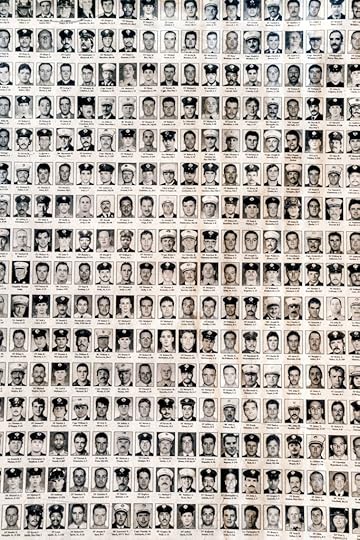
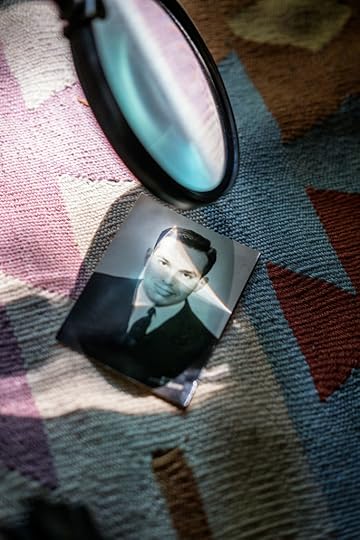

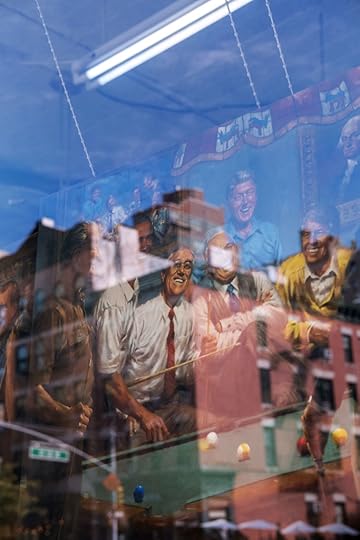

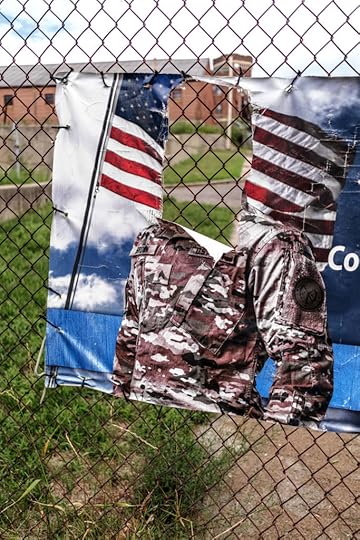
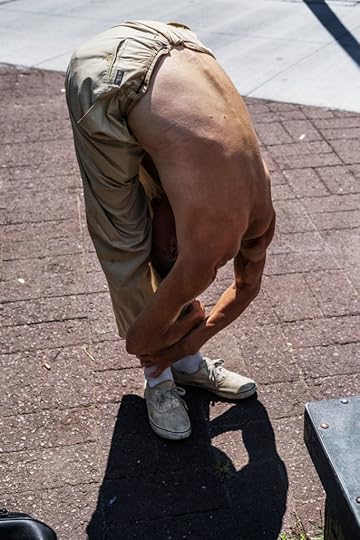


All photographs from the series Tokens of an Unled Life, 2020, for Aperture. Courtesy the artist.
In Berlin, a Retrospective of One of Germany’s Most Influential Photographers
“Waffenruhe is a real ass-kicker,” the American artist Lewis Baltz wrote in a letter to Michael Schmidt and his wife Karin in 1987. According to Baltz, the series of haunting black-and-white photographs that Schmidt took in the years between 1985 and 1987, in proximity of the Berlin Wall and combined with still lifes and portraits of young adults, is a “masterpiece.” The work, which conveys a lingering hopelessness and feeling of entrapment, marked a turning point in Schmidt’s career. It also takes center stage in Schmidt’s retrospective Photographs 1965–2014, currently on view at the Hamburger Bahnhof in Berlin, showcasing Schmidt’s five-decade-long career.
 Michael Schmidt, Untitled, from the series Waffenruhe (Ceasefire), 1985–87
Michael Schmidt, Untitled, from the series Waffenruhe (Ceasefire), 1985–87Born in Berlin in 1945, just a few months after the fall of the Nazi regime, Schmidt remained living in the city’s Kreuzberg district after the Berlin Wall was erected along its perimeter in 1961. And as with Waffenruhe, Schmidt dedicated a great deal of his work to the city—or more precisely, to West Berlin, its history, and its citizens. Schmidt began to photograph in the mid-1960s, when he was still working for the West Berlin police force as chief patrol officer. By the time he published his first book, Berlin Kreuzberg (1973)—which was commissioned by the Berlin senate and includes photos Schmidt had taken of his neighborhood throughout the four preceding years—he had quit his job in order to become a professional photographer. While he sold some of his pictures to photo agencies and received further funding from the city for socially engaged projects about working women in Kreuzberg, the disadvantaged, and the elderly, Schmidt struggled to depart from the conventions of documentary photography to develop a more distinctive artistic position.
Berlin Wedding (1976–78), another project on a Berlin district, would eventually become a breakthrough in that regard. While his Berlin Kreuzberg photos depicted everyday life in Kreuzberg, the streets of Wedding in Schmidt’s photos appear mostly deserted. These pictures are more rigorously composed and consistent in style. Arranged as a coherent series of urban scenes, they are paired with a group of portraits that show Wedding residents at work and in their apartments. The urban scenes of Berlin Wedding leave an almost eerie impression, yet the portraits seem somewhat comical in their reserved stiffness.
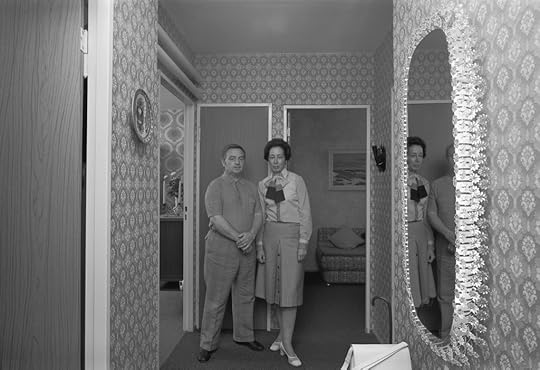 Michael Schmidt, City Inspector at the Wedding District Office, from the series Berlin Wedding, 1976–78
Michael Schmidt, City Inspector at the Wedding District Office, from the series Berlin Wedding, 1976–78Unlike artists such as Ed Ruscha, Dan Graham, or Jeff Wall—who, by the 1960s, had begun to capture cityscapes and suburbia to critique the notion of objective documentary photography—Schmidt’s approach was less conceptually driven, less tongue-in-cheek and more concerned with technical and formal aspects. He never really broke with the documentary tradition but rather gave it a highly subjective and personal twist. His following series gained an essayistic quality verging on the poetic. Their aesthetic is closer—and Waffenruhe is a prime example of this—to that of the topographic ventures of John Gossage and Lewis Baltz. (Schmidt became friends with the two artists after he invited them to take part in an exhibition at Werkstatt für Photographie, a photography workshop at the adult education center in Kreuzberg, which he had founded in 1976.)
In the following years, Schmidt continued to present his work both in books and exhibitions. After Waffenruhe (and the reunification of Germany in 1990), Schmidt, however, focused increasingly on subjects larger than Berlin, and he explored different modes of photography and display. In Ein-heit (U-ni-ty) (1991–94), for example, which was first presented publicly in 1996 at the Museum of Modern Art, New York—the first solo show of a German photographer in several decades at the museum—Schmidt combined reproductions of found historical photographs with his own. Originally 163 photographs in total, the exhibition at Hamburger Bahnhof includes only a selection of the black-and-white images, all of identical size and arranged in a sequence without any indication of their origin or subject. Some are familiar, some enigmatic. Schmidt conceived of each as an ambiguous fragment of Germany’s history between 1933 and 1989. And so, the picture of a Nazi rally appears next to the portrait of a teenager wearing a baseball cap, next to a close-up of a bottle of liquid Diazepam, next to a portrait of Lenin, next to a cropped image from an East German Socialist Party publication.
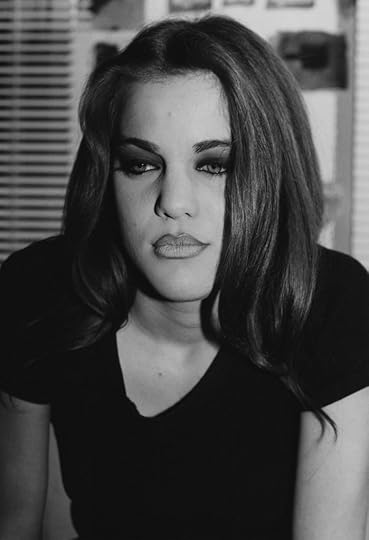 Michael Schmidt, Untitled, from the series Ein-Heit (U-ni-ty), 1991–94
Michael Schmidt, Untitled, from the series Ein-Heit (U-ni-ty), 1991–94Compared to the fixed sequence of a photobook, the presentation of Schmidt’s work in exhibitions has always given the artist the opportunity to try new variations and constellations. How far this site-specific aspect of his work will be realized throughout the next iterations of the exhibition remains to be seen. (After Berlin, the retrospective will travel to Paris, Madrid, and Vienna.) The show in Berlin provides a great occasion to dig deeper into Schmidt’s captivating work and related archival material. However, the retrospective format is a bit too formulaic and didactically implemented: the display of Schmidt’s lifework follows a rigid chronological order, reproducing the old trope of the artist finding himself and his “voice.” Consequently, the institutional effort to immortalize and cement Schmidt—an artist who checks all the boxes of privilege: straight, white, male—into the canon of art history becomes generic. This is something the other exhibition venues should consider balancing out, applying a more self-reflective curatorial stance and a vision that might better reflect Schmidt’s constant eagerness to overcome stale conventions.
Michael Schmidt – Retrospective: Photographs 1965–2014 is on view at Hamburger Banhof, Berlin, through January 17, 2021. All photographs © Stiftung für Fotografie and Medienkunst with Archiv Michael Schmidt.
Aperture's Blog
- Aperture's profile
- 21 followers



